- How to book?
- EUR (€) GBP (£) USD ($)

The Fastest & Biggest Catamaran Ferries
Catamaran Ferries are faster than traditional ‘monohull' ferries. These ferries can achieve much higher speeds. In Europe, you have several of these fast catamaran connections that you can take.
Take for instance the ferry on the connection between Hirtshals and Kristiansand:

The Fastest Ferry
The Franciso ferry remains the fastest ferry, built by Incat:
HSC Francisco is a High-Speed Catamaran built by Incat in Hobart, Tasmania. Powered by liquefied natural gas, she is currently the fastest passenger ship in service, reaching a speed of 58 knots (107 km/h; 67 mph). The propulsion is by two GE LM2500 water jets. Connecting Buenos Aires with Montevideo .
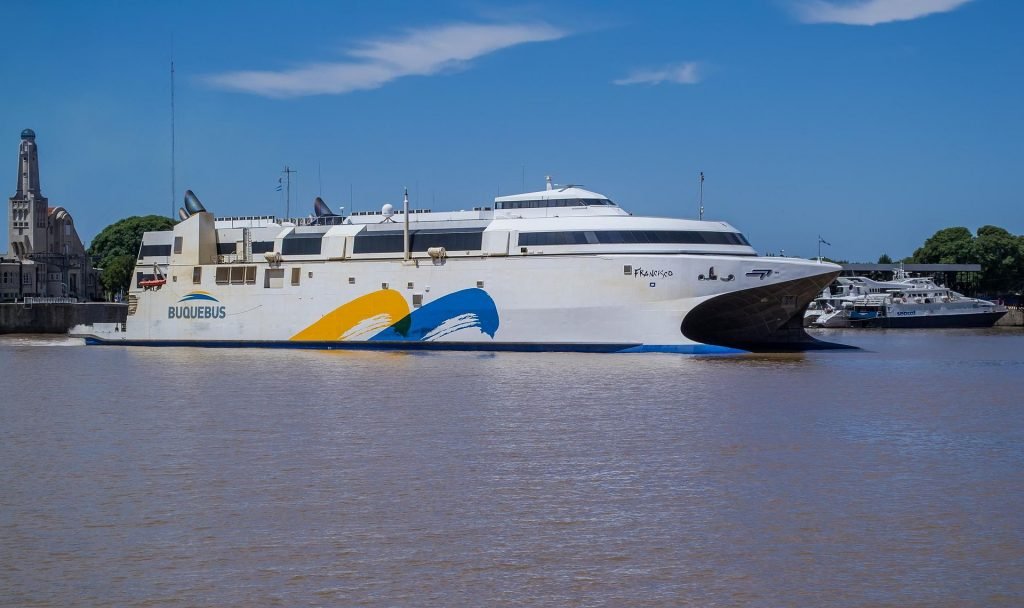
A ferry connection is considered fast if more than 40 knots can be achieved. Only ferry catamarans make this. Boats that are often high and therefore have less friction with the water.
All fast Catamaran connections in Europe
Catamaran connections in Scandinavia and the Baltic Sea
- Aarhus – Odden
- Rønne – Ystad (2 pieces)
- Gothenburg (Sweden) – Frederikshavn (Denmark)
- Gran Canaria – Fuerteventura ( Leonora Christina )
- Hirtshals (Denmark) and Kristiansand (Norway)
- Viking FSTR – Helsinki to Tallinn (Very fast!)
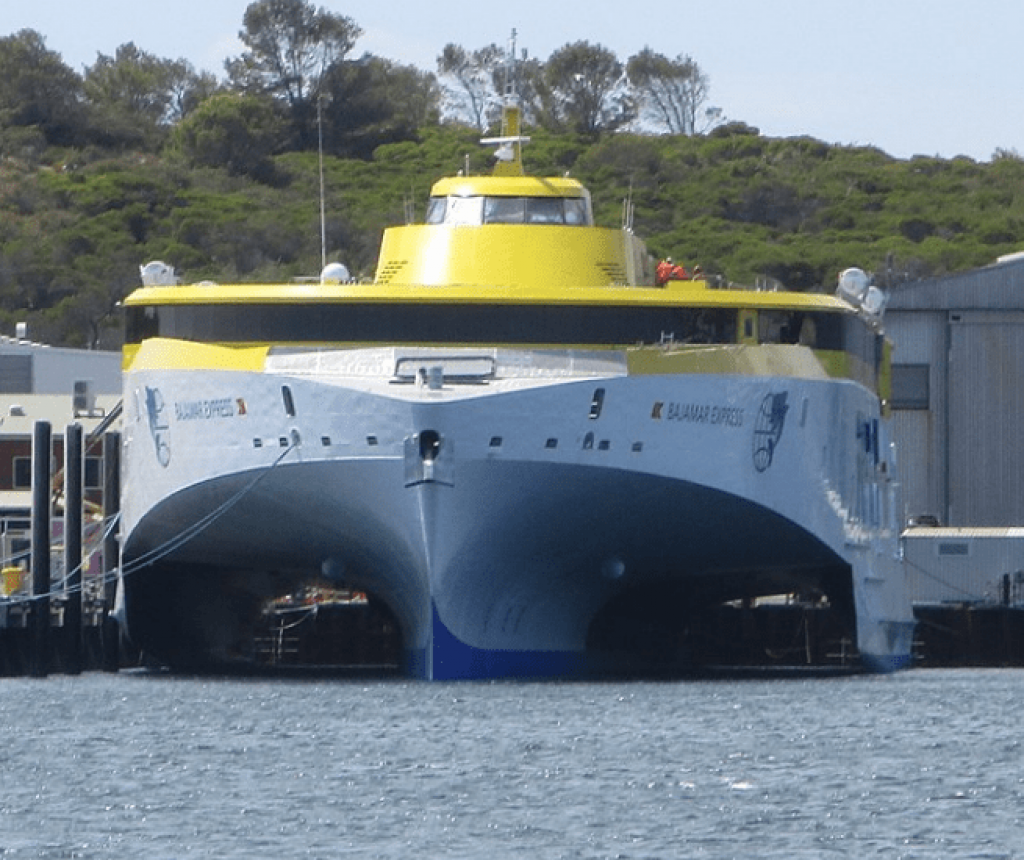
You also have these ferries in the British Isles, including from Stranraer to Belfast and ferries from England to the Channel Islands. Since these often change locations, it is difficult to pin them to one location or connection.
You also recently have more of these High-Speed ferries available around Greece.
The Largest Catamaran Ferry

The largest diesel-powered catamaran ferry is the HSC Express 1 and 2 between Aarhus and Odden (as well as Rønne and Ystad) in Denmark. More information about this catamaran can be found here on Wikipedia . The newer variants of this Ferry. For example, the HSC Express 3 is slightly smaller, so it may well be the case that these will remain the fastest and largest catamarans in the world for a very long time.
UPDATE: By the way, the Express 5 will eventually become the largest.
Sometimes you hear that the Hodor pleasure yacht ( Astilleros Armon ) is the largest catamaran with 60 meters, but this is incorrect. It is much smaller than the HSC Express at 112.6 meters .
Images of the highest-speed Catamarans in the world

Use our ferry guides and maps

Ferry to Sweden from Finland
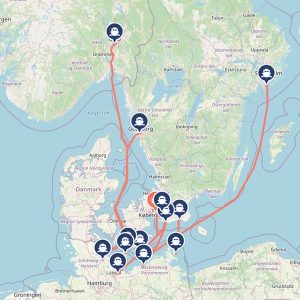
Ferry to Corsica
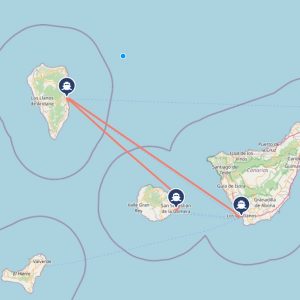
Ferry to La Palma
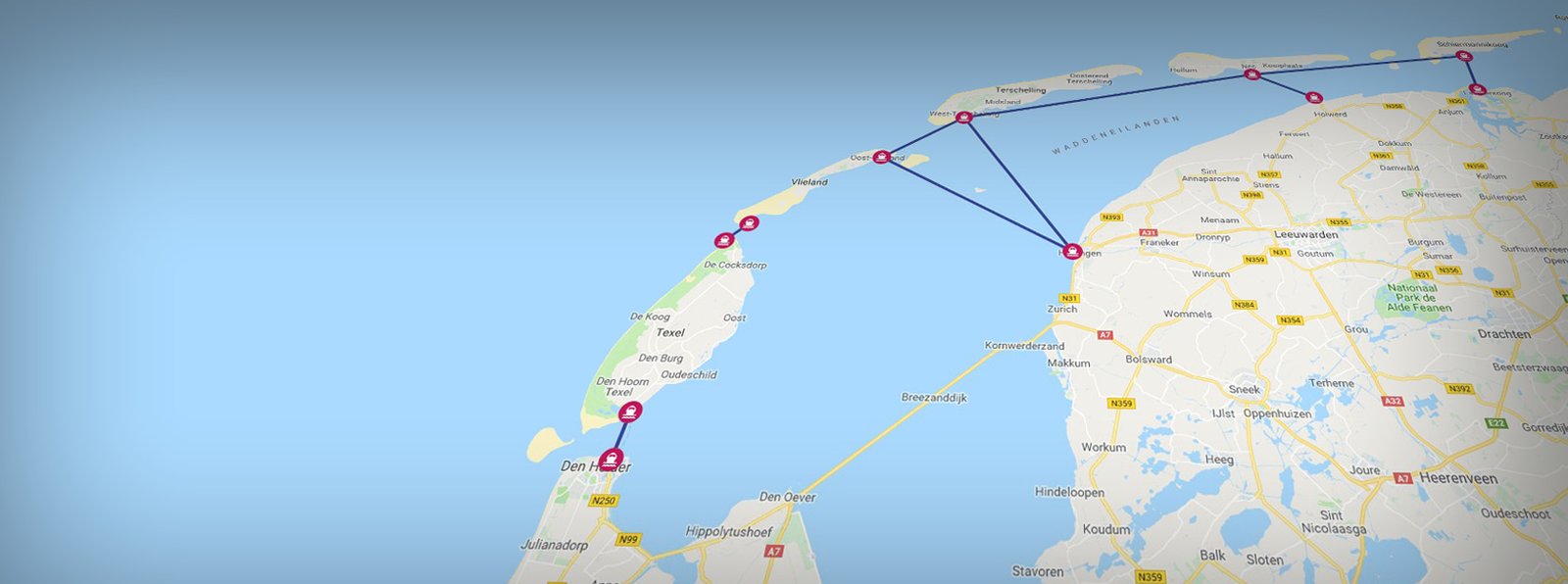
Island hopping through the Dutch Wadden islands
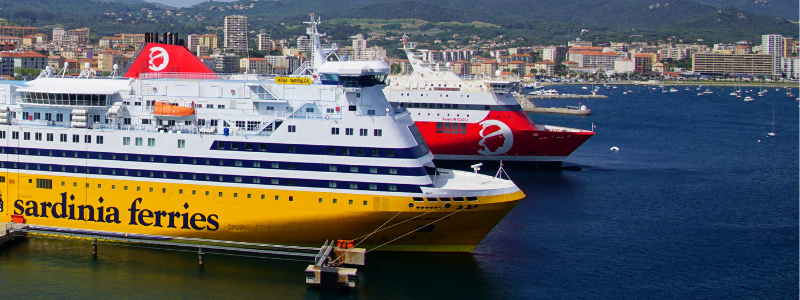
Top 20 EU Passenger Transport Countries
Tags: Africa Global South America
The editorial team at FerryGoGo writes travel guides and creates route ideas for ferry travel, along with everything else that might be of interest to travelers and tourists.

- Ferries and Dogs: The Complete Guide
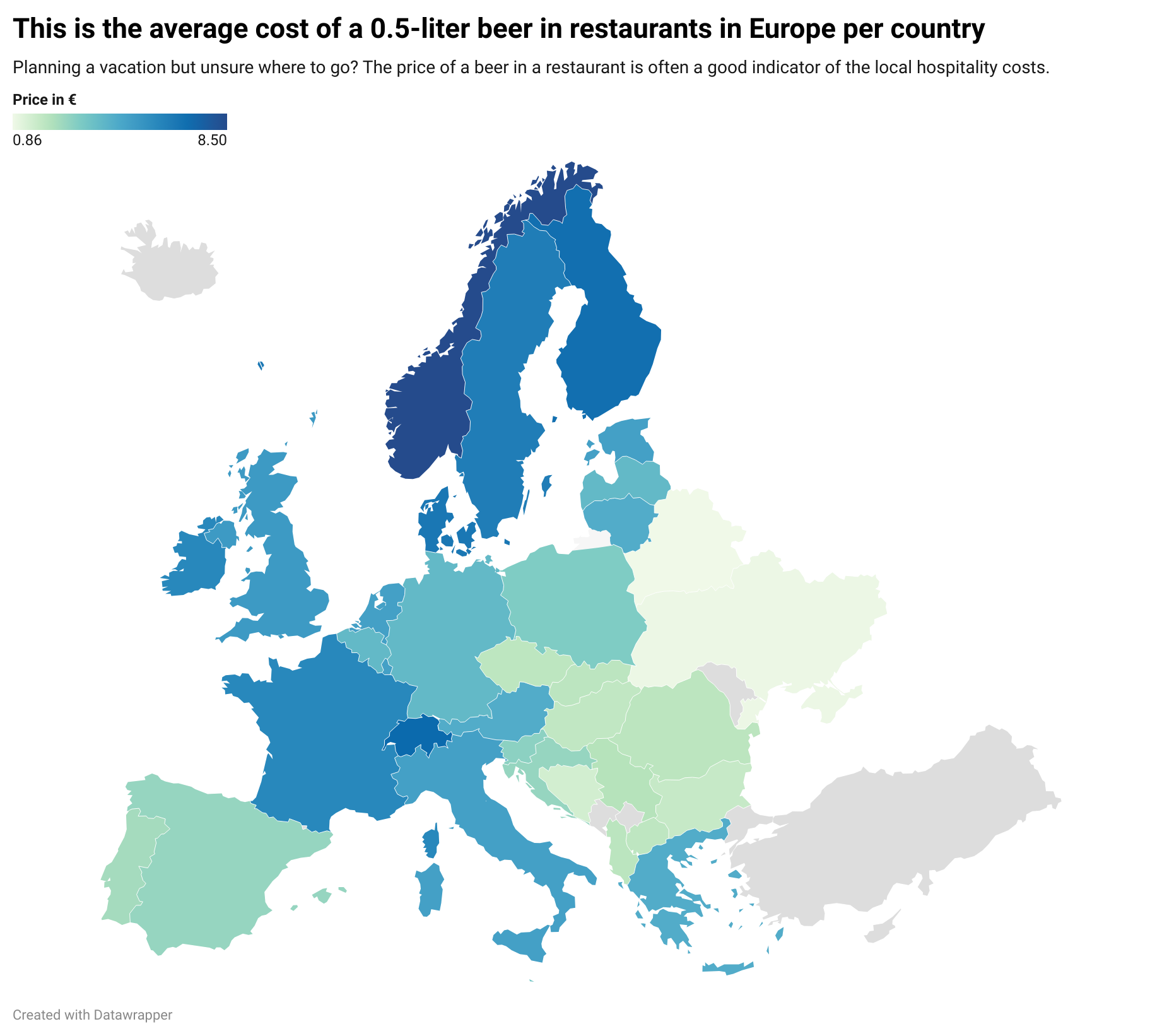
- This is the cost of a beer across Europe
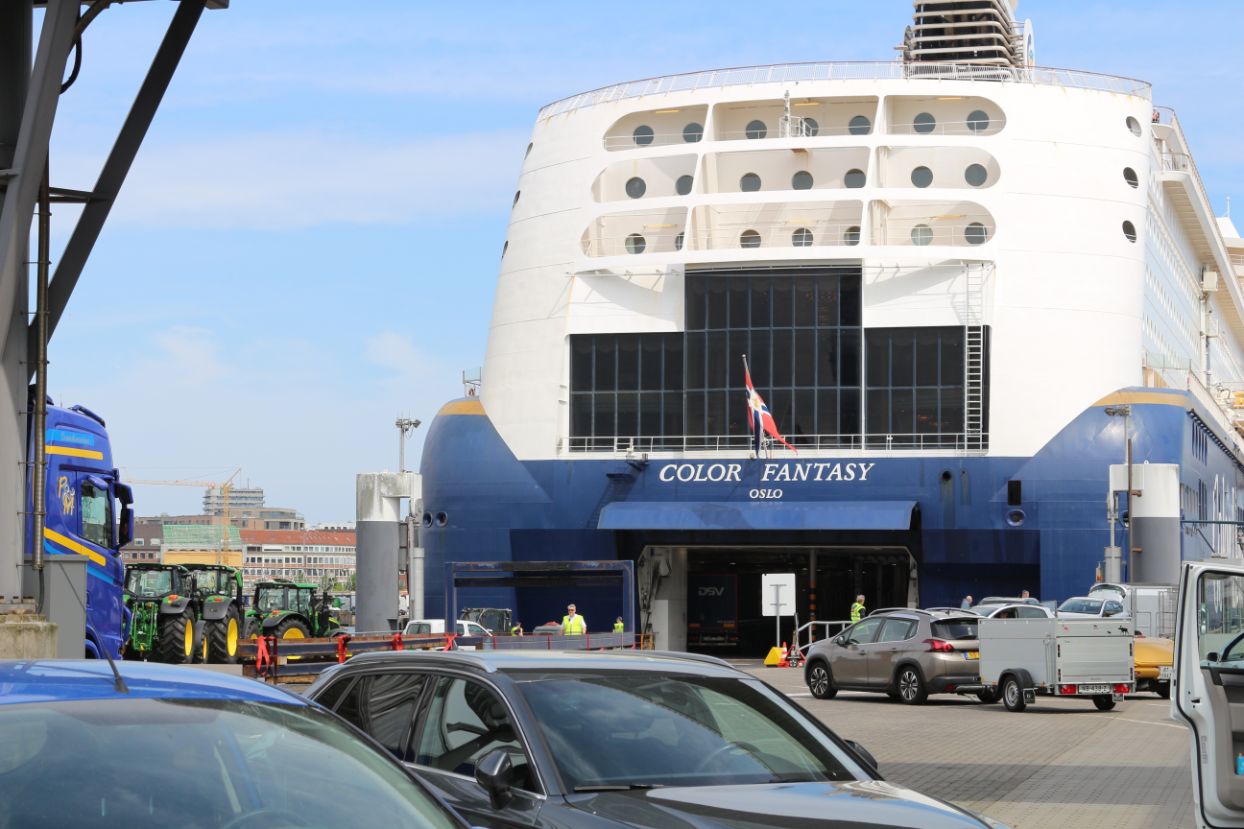
- Significant Drop (-22%) in Rental Car Prices Across Europe
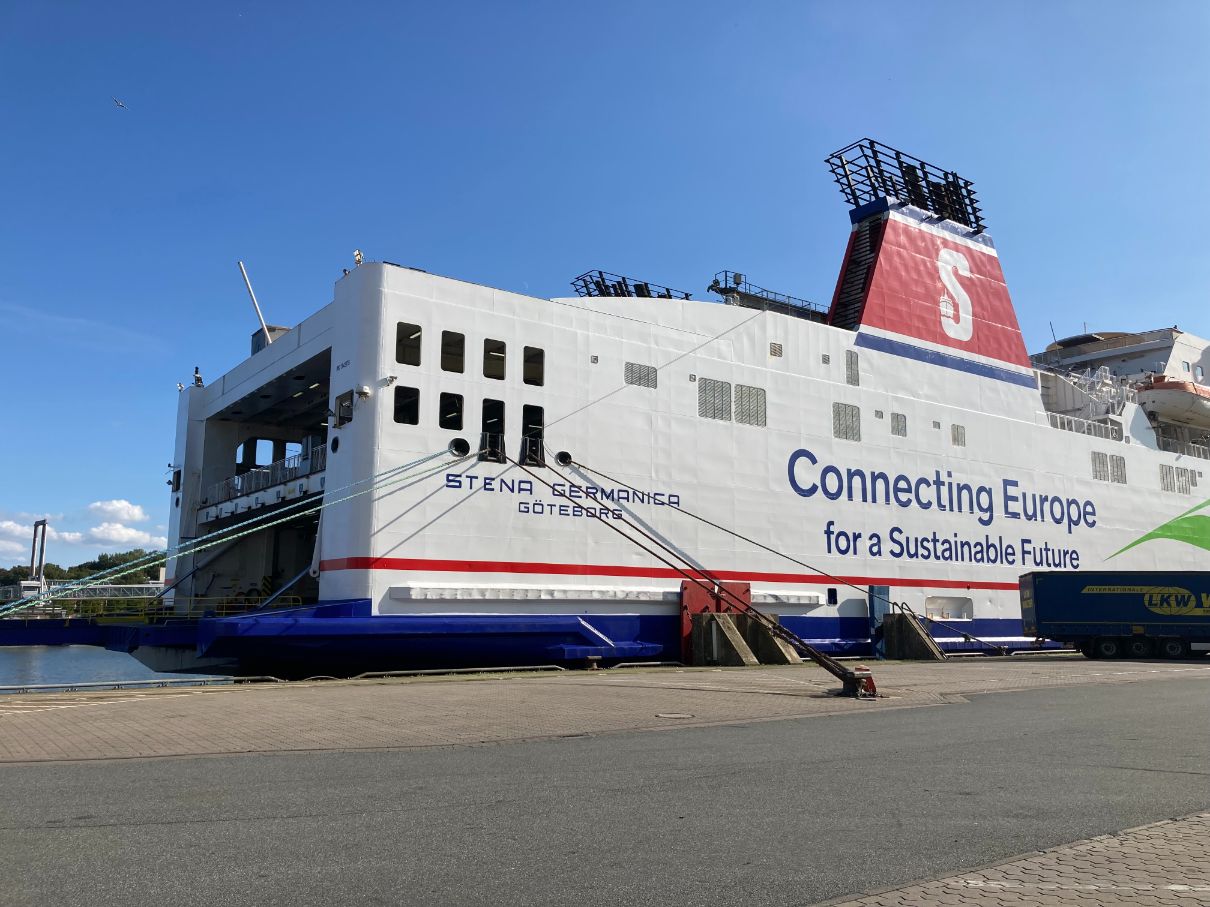
- This is what you’ll spend this summer on a ferry crossing.
The Bajamar Express is a beauty, love to see more of these catamaran ferries in Europe!
The White Blue ferry is the Iris 6.1 Catamaran Passenger Ferry. I think the project failed:
” The philosophy underpinning the design concept was the need to achieve three important targets. Most importantly, it had to be able to transport passengers in comfort. In order to impose a mimimal environmental impact on ports, estuaries and banks, it had to generate a low wake at all operational speeds. Lastly, it had to meet these standards without negatively influencing the hull form, which was designed to maximise speed and economy.”
The ferry is still active somewhere in Croatia. When you spot it let us know 🙂
Leave a reply Cancel reply
Save my name, email, and website in this browser for the next time I comment.
Smooth sailing with the FerryGoGo ferry guides to your dream destinations. Discover the perfect ferry routes with our interactive maps and essential travel insights.
About | Contact | Disclaimer | Privacy & cookies
🌐 Deutsch 🌐 Dutch
At FerryGoGo, we aim to make ferry travel accessible and straightforward for everyone. By offering practical information on ferry routes, guides, and alternatives, we help you make the best choice for your journey, whether you prioritize comfort or speed. Discover the ferry routes that best suit your preferences and needs with FerryGoGo.
- Ferries to Spain
- UK to Norway ferry (Indirect)
- Ferries to France from the UK / England
- Ferries to Ireland (from the UK)
- Avoid Seasickness
- #1 Alaska Interactive Map
- To Portugal ! (from UK)
- To Spain from England
- Ferries to the Netherlands
- Dover Calais Ferries
- Below Deck Filming Locations – on a budget by ferry
- Price of a ferry crossing, a beer and a bratwurst during EURO 2024.
- Historic ferry crossings from the UK to Scandinavia
- Project Brave: New Ferry Rosyth-Dunkirk
- Follow us on 𝕏


- Anchor Handling Towing Supply
- Offshore Platform Supply
- Multi-Purpose Construction Dive Support
- Accommodation Work Boat Crane Barges
- Lift Boats – Jack Ups
- Fast Crew Supply FSIV
- Work Boats – Utility Supply Boats
- Patrol Boats
- Survey Research
- Pipe Lay / Cable Layer Vessels
- Drilling Rigs Platforms JU Semi-Sub
- Dredgers / TSHD / Hopper
- Power Generation Vessels
- Floating Dry Docks
- Anchor Handling Tug Supply
- Harbor Tugs
- River Tugs / Push Boats
- Deck Barge / Bin Wall Barge / Spuds
- Crane Barges – Deck Barges w Land Cranes
- Hopper Barges – Covered or Open
- Tank Barges Oil Chemicals Water
- Lift Boats – Jack Up Barges
- Self Propelled Barges – Sand Aggregate Cargos
- Roll On / Passenger
- Landing Craft
- Passenger Ferries – Catamaran High Speed & Single Hull
- Passenger Excursion / Dinner
- MOTOR YACHTS
- Cruise Ships
- Roll On / Roll Off Cargo – Sale or Charter
- General Cargo Tween Deck Box Hold
- Multi-Purpose / Heavy Lift
- Container Shipping Competitive Rates – International Ocean Transport
- Refrigerated “Reefer”
- Freight and Dry Bulk Cargo Shipping Quotes Worldwide
- Cement Carriers
- Sand Carriers
- Livestock Carriers
- Crude Oil Tankers
- Oil Chemical Tankers
- Product Tankers
- Bunker Tankers
- Asphalt Bitumen Tankers
- LNG LPG Gas Carriers
- FPSO Floating Production Storage
- Lobster Boats
- Commercial Fishing Trawlers Seiners Longliners Factory Flash Freezer Processor Vessels
- Ship Cranes
- Diesel Engines
- Diesel Generators
- Ship Bow Stern Azimuth Thrusters
- Decompression Chamber
- International Ocean Shipping & Freight Forwarding – Competitive Rates
- LIST YOUR VESSEL WITH HORIZON
- BULK COMMODITIES FUELS SHIPPING QUOTES
- Sale & Purchase Terms
- Puerto Rico Relief Effort
- Artificial Reef Ships MANTA & DOLPHIN – Fort Walton Beach Destin Florida USA
- Matters of Faith
Passenger Ferries – Catamaran High Speed & Single Hull
Contact us with your requirements for a high speed passenger ferry – contact s&p dept..
| Image | -->Vessel Type | --> | |||||||||||
|---|---|---|---|---|---|---|---|---|---|---|---|---|---|
| 16516 | --> | 138' | 23' | 3' | 2018 | CCS | -->China | POR | |||||
| 16506 | --> | 131' | 36' | 10' | 2015 | 65 | KR | -->Korea | POR | ||||
| 16390 | --> | 39' | 2015 | Built to DNV | -->Africa | POR | |||||||
| 16382 | --> | 249' | 52' | 7' | 2024 | 650 | 2400 | INSB | -->Greece | POR | |||
| 16381 | --> | 246' | 59' | 2024 | 2499 | INSB | -->Greece | POR | |||||
| 16380 | --> | 276' | 52' | 10' | 2024 | 600 | 1928 | INSB | -->Greece | POR | |||
| 16331 | --> | 112' | 2000 | 20 | DNV | -->Australia | $228,000 | ||||||
| 16293 | --> | 115' | 33' | 7' | 1991 | KST | -->Korea | POR | |||||
| 16276 | --> | 131' | 36' | 10' | 2015 | 65 | KR | -->Korea | POR | ||||
| 16084 | --> | 131' | 33' | 7' | 1996 | 53 | KR | -->Korea | POR | ||||
| 16074 | --> | 138' | 1996 | KR ex DNV | -->Asia | $1,400,000 | |||||||
| 15865 | --> | 131' | 36' | 10' | 2015 | 65 | KR | -->Korea | POR | ||||
| 15800 | --> | 138' | 23' | 3' | 2018 | CCS | -->China | POR | |||||
| 15745 | --> | 131' | 33' | 1996 | 53 | KR | -->Korea | POR | |||||
| 15712 | --> | 115' | 33' | 1997 | BV | -->EU | POR | ||||||
| 15682 | --> | 262' | 62' | 7' | 1998 | 162 | KR | -->Korea | POR | ||||
| 15666 | --> | 144' | 36' | 7' | 2002 | KR | -->Korea | POR | |||||
| 15590 | --> | 144' | 36' | 2002 | KR | -->Korea | POR | ||||||
| 15549 | --> | 141' | 39' | 3' | 1996 | 36 | KR | -->Korea | POR | ||||
| 15504 | --> | 75' | 26' | 3' | 1997 | KOMSA | -->Korea | POR | |||||
| 15489 | --> | 141' | 39' | 7' | 1996 | 36 | KR | -->Korea | POR | ||||
| 15349 | --> | 230' | 46' | 10' | 2017 | 750 | KR | -->Korea | POR | ||||
| 15329 | --> | 144' | 36' | 7' | 2002 | KR | -->Korea | POR | |||||
| 15326 | --> | 115' | 33' | 7' | 1997 | KST | -->Korea | POR | |||||
| 15288 | --> | 141' | 39' | 3' | 1996 | 36 | KR | -->Korea | POR | ||||
| 15245 | --> | 262' | 62' | 7' | 1998 | 162 | KR | -->Korea | POR | ||||
| 15192 | --> | 115' | 20' | 3' | 1991 | 2610 | BV | -->Greece | POR | ||||
| 15154 | --> | 131' | 33' | 13' | 2004 | 47 | KR | -->Korea | POR | ||||
| 15129 | --> | 131' | 33' | 7' | 2004 | 47 | KR | -->Korea | POR | ||||
| 15066 | --> | 115' | 23' | 7' | 2020 | JG | -->Japan | POR | |||||
| 14853 | --> | 499' | 82' | 1978 | 3133 | RINA | -->Med Sea | POR | |||||
| 14815 | --> | 75' | 26' | 3' | 1997 | KOMSA | -->Korea | POR | |||||
| 14589 | --> | 95' | 26' | 3' | 1990 | 3798 | CRS | -->Adriatic Sea | POR | ||||
| 14509 | --> | 157' | 39' | 7' | 2009 | 83 | DNV | -->Asia | POR | ||||
| 14402 | --> | 548' | 82' | 20' | 2002 | 4870 | KR | -->S. Korea | $11,500,000 | ||||
| 14239 | --> | 141' | 39' | 3' | 1996 | 36 | KR | -->Korea | POR | ||||
| 14124 | --> | 138' | 39' | 3' | 1993 | KR Coastal | -->Korea | POR | |||||
| 14077 | --> | 115' | 36' | 7' | 2011 | 2160 | CRS | -->Adriatic Sea | POR | ||||
| 14076 | --> | 115' | 36' | 7' | 2011 | 2160 | CRS | -->Adriatic Sea | POR | ||||
| 14075 | --> | 157' | 39' | 7' | 2009 | 9240 | CRS | -->Adriatic Sea | POR | ||||
| 14074 | --> | 184' | 43' | 10' | 2001 | 12444 | CRS | -->Adriatic Sea | POR | ||||
| 13975 | --> | 154' | 36' | 3' | 2009 | DNV | -->POR | ||||||
| 13974 | --> | 164' | 56' | 7' | 2023 | 300 | ABS | -->POR | |||||
| 13906 | --> | 256' | 2023 | BV | -->China | $6,500,000 | |||||||
| 13895 | --> | 256' | 46' | 13' | 2023 | --> | China | POR | |||||
| 13731 | --> | 282' | 1998 | 35348 | TL | -->Asia | POR | ||||||
| 13586 | --> | 144' | 36' | 2002 | KR | -->Korea | POR | ||||||
| 13531 | --> | 144' | 36' | 7' | 2002 | KR | -->Korea | POR | |||||
| 13442 | --> | 233' | 1998 | KR HSLC-SA2 | -->Korea | $4,100,000 | |||||||
| 13404 | --> | 118' | 36' | 2005 | --> | Asia | POR |

How Fast Do Catamarans Go? 5 Examples (With Pictures)
A catamaran is generally more balanced on the water and can be faster than a multi-hull vessel.
Unless you compare them to foiling monohulls like the new America’s Cup boats that sail at over 50 knots, they are not recreational vessels.
In this article, we will look at how fast each type of catamaran will go.
Table of Contents
Here are the numbers before we dive into the details:
| Sport Catamarans | 30 knots |
| Cruising Catamarans | 15 knots |
| Racing Catamarans | 45 knots |
| Power Cruising Catamarans | 70 knots |
| Swath Catamarans | 30 knots |
Average Speed For Sailing Catamarans
Catamarans can vary in size from 14 ft to over 100 ft. Catamarans can come in a wide variety of design types.
Sailing Catamarans have been attempting to make advancements over their mono-hulled counterparts.
These advancements include:
- Foils that assist with lifting the vessel out of the water.
- Stability advancements.
- Racers that can maintain their speed while out in the ocean.
3 Different Types of Sailing Catamarans:
1) sport catamarans.

One type of sailing catamaran is a sport catamaran, which is otherwise known as recreational. These are typically supposed to have a small crew and launch and land on beaches.
Sport catamarans do not normally have living quarters and are ideal for day trips. Resorts or other rental services often use these.
These can also be used for racing.
Sport vessels have been known to travel over 30 knots but can speed over 40 knots in the proper conditions.
2) Cruising Catamarans

Another type of sailing catamaran is a cruising catamaran. These often come with complete living accommodations, so they sacrifice speed over their sportier counterparts.
They can average between 9 and 10 knots, depending on the conditions. The top speed is typically around 15 knots.
It would be best if you were careful with catamarans that have living quarters. The more you weigh it down, the less speed you will have.
3) Racing Catamarans

The final type of sailing catamaran is an ocean racing catamaran.
These boats are large and can reach over 100 feet in length.
The top speed of this type of catamaran is around 45 knots.
Because of the prize money for entering these in races, much research goes into their advancement.
Average Speed Of Power Catamarans
Catamarans with power motors fill a different type of boating category.
These are commonly used when speed and smoothness are favored over space or capacity.
Because of their stability, catamarans are good vessels for combating seasickness as well as transportation. We have a separate article here with all you should know about catamarans and (how to overcome) seasickness .
On a commercial level, these can be used for ferries for both people and vehicles. They are used for short term travel, often to or from islands.
Like sailing catamarans, there are a few types of power catamarans.
1) Power Cruising Catamarans

Similar to sailing cruising catamarans, they also have power cruising catamarans. These also have living quarters and are stable while out on the water. The speed of these vessels highly depends on the motors equipped and the size of the boat itself.
Like passenger transport or ferries, catamarans have a high speed of about 40 to 70 miles per hour.
These are made to travel at great speeds to allow their commuters the shortest possible ride to their destination.
The military also utilizes power catamarans. They use power catamarans to transport military cargo. These ships are ideal because of their speed, holding capacity, and ability to venture into shallow ports.
2) Swath Catamarans

They also have small-waterplane-area twin-hull vessels. These are called SWATHs.
These differ from the average catamaran because they also have submarine-like hulls that stay completely under the water.
Due to the hulls being submerged, they are not normally affected by waves. These are used most often in the ocean as research vessels. They can also be used for certain types of yachts. Because of their stability, they are good vessels for furniture that will not require as much securing.
These often travel between 20 and 30 knots.
Some catamarans are designed for wave piercing. These are made to pierce through waves rather than sail over them, causing them to be faster. These can be used as passenger ferries, yachts, and military vessels as well.
3) Whitewater Catamarans

There are also recreational catamarans made for whitewater travel. These are sometimes called “cata-rafts.”
They are made using two inflatable hulls connected with a scaffold. These are lightweight and perfect for whitewater sports.
They are even able to be packed away in a backpack. They can take up to 20 minutes to assemble, including inflation.
They have high speeds on white water rivers and can be most compared to a canoe, kayak, whitewater raft, or other white water vessels.
Performance Characteristics Of Catamarans
Catamarans require four times the power to double their speed. A mono-hull vessel, however, would require eight times the power to double their speed.
This is because a Catamaran has less resistance in the water.
This is also good for conserving and using less energy.
Catamarans are also more stable in the water. This stability is effective at resisting heeling or capsizing. A multi-hull vessel would require four times the force to capsize as a similar-sized mono-hull vessel.
The general sailing in a catamaran is smoother and allows for activities that are not always possible on a mono-hull sailboat.
Are Catamarans Faster than Mono-Hull Vessels?
Because catamarans have less water resistance, they are generally faster than mono-hull vessels.
This is because their hulls are smaller, which means they have a smaller bow wave to fight.
A bow wave is a wave created by the displacement of water by the bow of a ship. After a certain speed, a boat has to start hauling itself over its own bow wave.
The larger hull a ship has, the larger its bow wave will be and the more power required to fight it.
Catamarans have two small and narrow hulls, so they do not have much of an issue with their bow wave. This is one reason they are usually faster than a similar-sized mono-hull vessel.
Catamarans can be between 20-30 percent faster than their monohull counterparts.
Issues with catamarans over mono-hulls are that they can take more time to turn.
How Is The Speed Measured?
Boats commonly measure speed using GPS tracking devices to measure distance traveled. Speed while sailing is measured in knots. A knot is one nautical mile per hour, which equals about 1.15 miles per hour.
How Fast Are Catamarans Compared To Other Boat Types?
- Sailing catamarans typically average about 10 knots.
- Pontoon boats average about 20 mph.
- A powerboat cruiser can average anywhere between 30 and 50 mph.
- Cigarette boats can even reach close to 90 mph in the proper conditions.
- Sailboats average between 6 and 12 mph depending on wind conditions. This includes mono-hull between 6 to 8 mph and catamarans and trimarans between 9 and 10mph
Two different factors can determine the speed of sailing ships:
1) The hull type as listed above.
Different hulls rest in the water more or less than other types. The less of the hull that is underwater, the faster it can go.
This is because the less of the hull in the water, the less drag created while sailing.
2) The length of the boat
The longer the boat, the faster it can go. Every boat has a maximum hull speed that cannot be exceeded unless the boat can plane on the water’s surface or be lifted on hydrofoils. For most boats, the longer the boat, the higher the maximum hull speed is.
Speed Vs. Comfort Considerations For Catamarans
If you are looking for a catamaran, you have a lot of options.
You can choose to prioritize speed or comfort.
After deciding to purchase a catamaran, the type of catamaran you should look at depends on where and what you are using it for.
You will want to make sure that you look at what type of water you will be traveling in, how many people you are traveling with on average, and what type of speed you hope to achieve.
One thing you will want to keep in mind before the purchase of a catamaran is storage. If you intend to store your boat in a marina, you are often charged for two slips due to the beam, or width, of a catamaran versus the standard mono-hull vessel.
Catamarans can be beneficial for those who get seasick because they offer a steadier ride and the ability to have more open air space. Because the living quarters are not inside the hull and under the water’s surface, you have more windows and visibility.
Both sailing and power catamarans are viable options. Also, sailing catamarans can come with back-up power engines for low winds or situations such as docking in a marina.
Catamarans that have twin engines can offer more control and precision than those on a mono-hull vessel. This is good for tight and busy areas or navigating marinas.
Overall, there are plenty of options for you, and they offer many benefits over their mono-hull counterparts.
Click to share...

How Fast Do Catamarans Go?

Last Updated by
Daniel Wade
August 30, 2022
Catamarans are known for their speed, and some vessels are fast enough to break world sailing speed records.
Catamarans can go between 15 and 30 knots, with the fastest achieving speeds well in excess of 60 knots. Sailing catamarans are sometimes twice as fast as monohulls and cut through the water with greater efficiency.
In this article, we’ll cover how fast catamarans can go based on factors such as size, sail area, and design category. Additionally, we’ll compare catamaran speeds to monohulls and trimarans and cover the reasons why multi-hull sailboats blow monohulls out of the water.
We sourced the information used in this article from sailing guides and hull speed calculations. Additionally, we sourced information directly from the manufacturers of common catamarans.
Table of contents
Catamaran Speed by Type
Catamaran design can be split into different categories. After all, different vessels are designed for different tasks, as speed isn’t always the most important design consideration.
The fastest type of catamaran is the ultralight racing catamaran. These vessels have extremely narrow hulls and a remarkable planing ability. They’re designed to pierce waves and often achieve speeds in excess of 45 knots or greater, depending on conditions.
The second fastest catamaran variety is the sport catamaran. Sport catamarans often include a fairly good level of creature comforts in the cabin. They’re technically hybrid designs, because they are envisioned as a combination between a racer and a cruiser. Sport catamarans can achieve 30 knots or greater.
Cruising catamarans are designed primarily for safety and comfort. They’re often used for long offshore passages, where speed is important, but comfort is king. Despite their accommodations, cruising catamarans can still achieve a respectable 15 to 20 knots of speed—sometimes 50% faster than similarly-equipped monohulls.
Why are Catamarans So Fast?
Catamarans are remarkable vessels that can achieve amazing speeds. As a result of their unconventional design, typical calculations for hull speed (such as those used for monohulls) don’t always apply.
But what makes catamarans so much faster than equivalent monohulls? The first and most obvious speedy design element are the hulls themselves.
Catamarans don’t have a deep keel or a centerboard. This is because the second hull acts as a stabilizing device, and it helps the vessel track straight. The lack of a keel reduces weight (and equally important). It also reduces drag.
Additionally, catamarans behave in strange ways while underway. The hulls have a tendency to rise out of the water further the faster they go. This further reduces drag and makes it easier for the vessel’s speed to climb once it starts to move.
One additional characteristic is how the vessel’s sails point relative to the wind. Catamarans keep their sails perpendicular to the wind, which allows them to harness energy more efficiently. This is because, at a perpendicular angle, less wind energy is lost by spillage over the edge of the sails.
Are Catamarans Faster than Monohulls?
Yes, catamarans are typically faster than monohulls. They’re also a lot more stable, as their spaced-out hulls provide better motion comfort in rough seas. Catamaran hulls are narrower than monohulls, which also reduces drag and increases speed.
Catamaran vs. Monohull Speeds
We know that catamarans are faster than monohulls in most situations. But how much faster are they? Here’s a table of hull speeds for monohulls, which is a useful reference when comparing speed. Hull speed isn’t the absolute fastest that a boat can go, but it’s a good practical estimate for understanding the hydrodynamic limitations of single-hull designs.
Hull speed calculations for catamarans are more complicated. This is because catamarans have a greater length-to-beam ratio. And due to their narrow hulls and open center, they aren’t affected by the same hydrodynamic drag forces that monohulls are limited by.
For example, a 55-foot monohull sailboat with a waterline length has a hull speed of 9.4 knots or 10.9 mph. Its actual speed could exceed that in the right conditions, but rarely by more than a few knots.
Compare that to an efficient 51-foot catamaran, which can easily achieve speeds in excess of 20 knots in reasonable winds. That’s more than double the hull speed of a monohull with a similar waterline length and proves that catamarans operate under a completely different set of rules.
Wave Piercing
One aspect of catamaran design that makes them superior speeders is their ability to pierce waves. Specially designed catamarans have minimal buoyancy at the bow, which allows them to slice through waves instead of going over them.
This increases the speed at which catamarans can cover the distance. Think about it—a boat going over a wave has to use more energy to reach the same destination, as the height of the wave almost makes the distance further.
It’s like walking over a hill or on flat ground—you’ll take more steps walking up and down the hill than in a straight flat line. Wave piercing catamarans enjoy better stability, and they ‘take the flat road’ to a greater extent than monohulls.
Do Catamarans Plane?
Planing is when a boat’s hull rises out of the water due to hydrodynamic lift. This increases speed and efficiency, as there’s less drag but sufficient contact for stability. It also reduces rolling, as the bow only contacts the taller portions of the waves.
Catamarans have planing characteristics, but they generally don’t plane as dramatically as powerboats. This is still worth noting, as catamarans are specifically designed to use the phenomenon of hydrodynamic lift to gain speed and efficiency.
You’ll visibly notice a catamaran’s hull rising out of the water as it increases in speed. Compare that to a displacement monohull design (such as a classical cruising sailboat with a deep keel), which won’t rise out of the water in any significant way.
Are Catamarans Faster than Trimarans?
A trimaran is a catamaran with an additional hull in the center. Trimarans are usually less common than catamarans, but they have some of the same design benefits as other multi-hull sailboats.
At first glance, it would seem logical that trimarans are slower than catamarans. After all, they have an extra hull in the center, which likely increases weight and drag. However, there are more important factors at play here.
Trimarans are almost universally faster than catamarans. This has to do with weight distribution. Trimarans center their weight over the middle hull, using the outer hulls primarily for stability. This allows them to reap the benefits of a catamaran while increasing the efficiency of the wind power it captures.
Fastest Catamarans
Catamarans are popular for racing. There are several world records held by catamarans and numerous production boats with especially impressive speed-to-size ratios. Here are a few of the fastest racing and production catamarans ever built.
Fastest Sailboat Ever—Vestas Sailrocket 2
The Vestas Sailrocket is a specialized racing boat designed only for speed. This incredible vessel is actually the fastest sailboat ever built—and no wonder it’s a catamaran. A monohull simply can’t achieve record-breaking speeds when put head-to-head with a lightweight multi-hull.
The vessel, which earned the world sailboat speed record in 2012, has a modest 150 to 235 square feet of sail. Nonetheless, it managed to achieve a remarkable top speed of 65.45 knots in only 25 knots of wind. That’s about 72 miles per hour—in a sailboat.
Soon, a team of Swiss engineers will release their own version designed to beat the 65-knot speed record. Their vessel, which is a hydrofoil, will attempt to hit an incredible target speed of about 80 knots.
Outremer Catamarans
But what about production catamarans? How do they stack up, and how fast can they go? French boat builder Outremer Catamarans builds some of the fastest production catamarans ever built. These are not specialty racing boats—in fact, they’re average-sized cruising catamarans.
Let’s use the larger Outremer 51 as an example. This high-end cruising cat is known for its almost outrageous speed capabilities. In ideal conditions, owners of the Outremer 51 have reported speeds exceeding 20 knots for extended periods.
That’s a production catamaran with speeds that rival 20th-century warships. With such a fast boat, the world’s oceans start to appear a lot smaller. Plus, the genius design of the Outremer 51 allows it to be crewed by just two people.
But how do Outremer catamarans achieve such high speeds? The secret is in precise engineering and hull design, along with a sail plan that’s perfectly catered to the vessel. The hulls are sleek and narrow and designed to cut through the water with minimal drag.
From the bow, the Outremer 51 hulls look paper-thin. They increase in width gradually, which eliminates areas of sudden drag. These narrow hulls evenly distribute the vessel’s 21,825-lb displacement. Its low-buoyancy bows reduce drag and blast through waves instead of riding over them.
Related Articles
I've personally had thousands of questions about sailing and sailboats over the years. As I learn and experience sailing, and the community, I share the answers that work and make sense to me, here on Life of Sailing.
by this author
Learn About Sailboats
Most Recent

What Does "Sailing By The Lee" Mean?
October 3, 2023

The Best Sailing Schools And Programs: Reviews & Ratings
September 26, 2023
Important Legal Info
Lifeofsailing.com is a participant in the Amazon Services LLC Associates Program, an affiliate advertising program designed to provide a means for sites to earn advertising fees by advertising and linking to Amazon. This site also participates in other affiliate programs and is compensated for referring traffic and business to these companies.
Similar Posts

Affordable Sailboats You Can Build at Home
September 13, 2023

Best Small Sailboat Ornaments
September 12, 2023

Discover the Magic of Hydrofoil Sailboats
December 11, 2023
Popular Posts

Best Liveaboard Catamaran Sailboats
December 28, 2023

Can a Novice Sail Around the World?
Elizabeth O'Malley
June 15, 2022

4 Best Electric Outboard Motors

How Long Did It Take The Vikings To Sail To England?

10 Best Sailboat Brands (And Why)
December 20, 2023

7 Best Places To Liveaboard A Sailboat
Get the best sailing content.
Top Rated Posts
Lifeofsailing.com is a participant in the Amazon Services LLC Associates Program, an affiliate advertising program designed to provide a means for sites to earn advertising fees by advertising and linking to Amazon. This site also participates in other affiliate programs and is compensated for referring traffic and business to these companies. (866) 342-SAIL
© 2024 Life of Sailing Email: [email protected] Address: 11816 Inwood Rd #3024 Dallas, TX 75244 Disclaimer Privacy Policy

How Fast Does a Ferry Go?
Way back in the olden days (1996), Hy-Line introduced a new and innovative traveling option for the public: a year-round high-speed ferry service to Nantucket. It was the first of its kind in this area and the service took off in a way we’d only ever dreamed of.
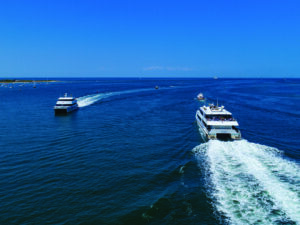
Ferries Built for High-Speed Travel
The vessels must be well-built, and sturdy enough to ply the waters of Nantucket Sound and the (sometimes finicky) New England weather. Speaking of that weather, cancellations are made based mostly on the wind, wind direction, and sea conditions. Our Operations Department makes the final decision on ferry cancellations.
All of our ferries to Martha’s Vineyard and Nantucket are all aluminum construction catamarans, built locally by Gladding-Hearn Shipbuilding in Somerset, MA – except one.
So how fast do these ferries go, you ask? We get that question a lot; humans can be very curious, especially when it comes to how quickly you’ll get to your destination. Hy-Line’s fast ferries can go at speeds of up to 34mph, which if you’re talking in proper seafaring terminology is 30 knots an hour (1 knot = 1.151 mph)!
Here are some more fun facts about our ferries !
Fast Ferry to Nantucket (Crossing Time: 1-hour, Distance: 22 miles)
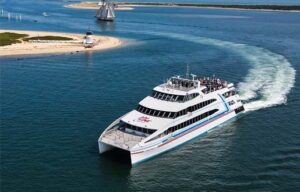
Length Overall: 151.4’ Draft: 7.0’ Beam: 34.33’ Engines: (4) KTA-50 Cummins Total Horsepower: 8800 Passenger Capacity: 493 Approximate Speed: 30 knots (or 34mph)
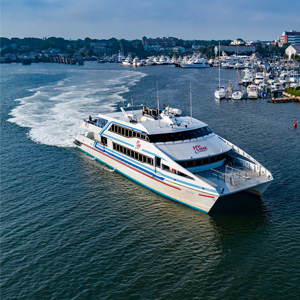
Length Overall: 143.3’ Draft: 6.43’ Beam: 34.33’
Engines: (4) QSK60-M Cummins Total Horsepower: 7500 Passenger Capacity: 293 Approximate Speed: 30 knots (or 34mph)
High-Speed Ferry to Martha’s Vineyard (Crossing Time: 1-hour, Distance: 17 miles)
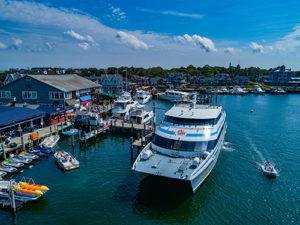
Length Overall: 106’ Draft: 4.0’ Beam: 30’ Engines: (4) MTU-12V 2000 Total Horsepower: 4200 Passenger Capacity: 149 Approximate Speed: 28 knots (or 32mph)

Length Overall: 90.9’ Draft: 4.9’ Beam: 31.4’ Engines: (4) KTA-50 Cummins Total Horsepower: 3750 Passenger Capacity: 350 Approximate Speed: 22 knots (or 25mph)
Long story short, if you’re looking to take a ferry trip to Nantucket or Martha’s Vineyard, Hy-Line Cruises can get you there quickly! Spend an hour with the breeze in your hair and taking in the views, and before you know it you’ll be stepping off onto the islands and enjoying your trip!
Leave a Reply Cancel reply
You must be logged in to post a comment.
- Cape Cod Canal
- Martha's Vineyard
- Sightseeing
- Travel Contest

The 8 Fastest Cruising Catamarans (With Speedchart)
As an Amazon Associate, we earn from qualifying purchases. We may also earn commissions if you purchase products from other retailers after clicking on a link from our site.
Cruising catamarans are some of the most comfortable boats to roam the water, making them fantastic for both long-term voyages and short-term vacations. Still, cruising catamarans can be great racing boats, but just how fast can they go?
Some of the fastest cruising catamarans include the Gunboat 68 (35 knots), Outremer 45 (25 knots), ORC50 (25 knots), FastCat 435 (20 knots), TS 42 (35 knots), and Lagoon 440 (20 knots). Yet, there are many more cats that can reach 35 knots safely.
If you are interested in knowing about the fastest cruising catamarans, I have you covered. I will be discussing some of the most popular, fastest cruising catamarans and the features that make them so excellent for sailors in need of speed. You will learn more about each catamaran’s speed and amenities, and I will let you know a trick or two to maximize your speed under sail.
| CATAMARAN | SPEED (Knots) |
|---|---|
| Gunboat 68 | 35+ |
| TS 42 | 35 |
| Outremer 45 | 25 |
| ORC 50 | 25 |
| FastCat 435 | 20 |
| Lagoon 440 | 20 |
| Privilege Signature 510 (For reference) | 13 |
| Fountaine Pajot Astréa 42 (For reference) | 10 |
How Fast Are Cruising Catamarans?
On average, cruising catamarans can reach top speeds of 15 knots , around 17.3 mph (27.84 kph). However, some exceptional, racing-designed cruising catamarans can reach up to 30+ knots in the right wind conditions.
When you want to better understand catamaran hull characteristics, I suggest the book Catamarans a Complete Guide (amazon link) by the president of Aeroyacht catamarans and that you check out my article Why catamarans capsize .
Factors That Impact Speed
Weight & size.
When you consider a catamaran’s speed, you will need to keep in mind the boat’s weight and narrowness. A vessel that can travel at 15 knots will still move slower if the boat is heavy or has a wide, extensive hull. When increasing the total weight of the boat, the boat “sits” lower in the water, thus increasing water drag and reducing speed.
Why trimarans are faster than catamarans!
Now that we know how weight impacts sailing characteristics, it follows that; if you are planning on racing your catamaran, you should remove as much luggage or extra gear as possible. Eliminating as much weight as possible will help you travel at your cat’s maximum speed .
Narrow Hulls
The hydrodynamics of the ship will heavily affect your speed. Narrower boats can chop through the water with less effort, making slender ships with pointed hulls far faster than wide vessels. So if you are looking for the fastest one available, you should look for a slender hull.
Slim hulls vs. space is a common tradeoff for catamarans optimized for family sailing .
Wind will also affect your ship’s speed, so do not expect your cruising catamaran to reach the maximum speed without heavy wind. Generally, cruising catamarans have two large sails (at least) to power them through the water, and some are so efficient that they can travel even faster than the wind.
Although a strong wind is needed to energize the sails and move the boat, too much wind will instead make the sails less efficient, and maximum speed is most often attained at lower wind speeds but with flat water.
Light Weight Materials
Faster cruising catamarans are often made from carbon fiber materials and fiberglass to keep the weight down. If you are looking for the quickest catamaran that you can find, you should note the materials that the ship is made out of and try to get one that is primarily made from carbon, glass, and resin materials.
While you are looking for the perfect catamaran for you, you should keep in mind what you NEED and what is NICE with your ship. Usually, this decision is between size and speed, but some of these excellent vessels have both.
Lightweight materials are usually costly; for example, a carbon fiber mast will probably cost you +$20 000, depending on the cat’s size.
I have written a buyer’s guide that explains the concept of NEED vs. NICE , which will make choosing the right boat faster and more accurate.
Gunboat 68 (+35Kts)
Gunboat 68 is a cruising catamaran designed to reach the highest speeds possible. Made by Gunboat, the ship uses Grand-Prix racing boats’ designs to develop the speediest cruising catamaran on the market.
Gunboat 68 is made entirely from carbon composites, which keeps the ship lightweight and fast. Gunboat 68 is the perfect catamaran for anyone who wants to reach the highest speeds possible while maintaining control of the vessel and not bouncing around too much.
Gunboat 68 has comfortable, spacious living quarters, though it also has a spacious deck with luxurious seating. Indeed, this cat has it all, making it one of the best cruising catamarans for racers and casual sailors. The design maximizes all of the living spaces and uses lightweight materials to add elegance and luxury to a speedy racing catamaran.
Gunboat 68 is one of the fastest cruising cats out there, with its maximum speed at more than 30 knots . Gunboat 68 can achieve these fast speeds, thanks to its lightweight construction and narrow hull design.
Still, Gunboat can customize your ship’s plan to accommodate your needs. Whether you are looking for a faster, more lightweight boat with a more extensive sail or a more comfortable cruiser, Gunboat 68 is an excellent option for you.
Specifications
- Maximum Speed: 35 knots
- Length: 68 ft (20.75 m)
- Beam: 29.9 ft (9.1 m)
- Draft: 3.9 ft (1.2 m) board up and 9.84 ft (3.8 m) board down
- Displacement: 23.7 tonnes
TS 42 (ORC 42)
The TS, or Tres Simple , cruising catamarans, designed by Marsaudon Composites, are some of the fastest cruising catamarans in the world.
Marsaudon developed the ship’s plans using racing boats’ streamlined designs and combined them with a cruising catamaran’s comfortable living spaces. The TS 42 has an inverted hull which helps it glide on the water swiftly without requiring much fuel, but it also has a spacious below-deck area with plenty of luxuries.
TS cruising catamarans are often considered the fastest cruisers on the market, with their speed comfortably reaching upwards of 35 knots in the right wind conditions. Generally, TS catamarans can sail at 20 knots, even with moderate wind. They are the perfect catamaran for racers and high-speed travelers, and yet they still have the amenities of a pleasant live-in vessel.
The TS 42 has a large galley and comfortable cabins, making it a cozy home or vacation vessel. With multiple bathrooms, large windows, and open lounge spaces, these catamarans are superbly comfortable to live in.
The deck and cabin space are divided by a large, openable window, which adds extra light and ventilation to the living areas. It also has plenty of on-deck space, which is rare in such a small vessel with an inverted hull.
If you think I’m using too many confusing nautical terms, you’ll find all the answers on my Catamaran parts explained page .
- Length: 42.8 ft (13 m)
- Beam: 24.3 ft (7.4 m)
- Draft: 4.9 ft (1.5 m) with boards up and 7.5 ft (2.3 m) with boards down
- Displacement: 5.8 tonnes
Outremer 45
Based in France, Outremer (pronounced uutremeer 😉 ) designed their Outremer 45 to be a long-lasting cruising catamaran that sails smoothly at high speeds. The Outremer 45 can reach about 15 knots, but the most comfortable sailing speed is 10 knots. However, it can travel up to 25 knots in the right wind conditions, making it a quick ship with all of a perfect cruising catamaran’s luxuries.
It is made for durability from carbon, vinyl ester, and divinycell so that it can last many years without repairs. The Outremer 45 has a narrow hull, and it is designed to be as thin as possible to maximize speed and fuel efficiency. Outremer 45 still has comfortable living quarters with large windows and lounge spaces within the boat. Indeed, it sacrifices no comfort for speed.
In this article, I talk a lot about catamaran characteristics, both interior and exterior, if that’s something you want to better understand, then I recommend an article where I write about trade-offs in design choices .
The Outremer 45 was initially designed to be a boat that would last 50 or more years, and it excels in its durability. It has an open, uniquely expansive side deck and plenty of on-deck conveniences that make sailing a breeze in the ORC50.
With supreme safety features such as tall railings, slip-free grips on deck, and enclosed lounge spaces, it is one of the safest catamarans available (is safety your top concern? I wrote a list of the safest catamarans on the market).
- Maximum Speed: 25 knots
- Length: 48 ft (14.6 m)
- Beam: 23.3 ft (7.1 m)
- Draft: 3.3 ft (1 m) with boards up and 6.7 ft (2.04 m) with boards down
- Displacement: 8.2 to 11.1 tonnes
Marsaudon Composites ORC50
Marsaudon Composites designed the ORC50, or Ocean Rider Catamaran 50, with both speed and comfort in mind. The ORC50 can be used for cruising, but it is also a great racing boat that has been awarded honors from many races worldwide.
Marsaudon borrowed designs from racing skippers to plan the ORC50, bringing together a cruiser’s comfort with the speed of an award-winning racing boat.
This cruising catamaran is lightweight, which allows it to gain speed at a fast rate, but still has comfortable living quarters inside the boat. It has a rotating carbon mast, which helps to eliminate turbulence over the mainsail and therefore increasing sail efficiency and speed!
With strong winds, the ORC50 can reach up to 23 knots , making it extremely fast for a cruising catamaran. The ORC50 can easily reach speeds much faster than the wind speed, which is a unique quality of this fast, yet comfortable catamaran.
The ORC50 is an excellent long-term living ship with its many organizational compartments, expansive galley, and well-ventilated sleeping cabin. It also has plenty of couches and seating areas built into the boat, and its intuitive design adds plenty of comfort to the cruising catamaran without weighing down the ship.
- Length: 50 ft (15.23 m)
- Beam: 27 ft (8.2 m)
- Draft: 5.6 ft (1.7 m) with boards up and 8.9 ft (2.7 m) with boards down
- Displacement: 13 tonnes
FastCat 435
African Cat’s catamarans, including the FastCat 435, are designed for speed and racing. This ship is mainly composed of epoxy, fiberglass, and carbon components, making it very lightweight to ensure that it travels as swiftly as possible.
The FastCat 435 may be as light as possible, but it is durable enough to last for many years in the most extreme conditions.
The FastCat 435 has comfortable living quarters and well-designed comfort spaces so that you can get the most out of your trips. The FastCat also has a green hybrid design, and it uses primarily electric power, which can help you prolong your sailing and use less fuel.
I find solar-powered/electric cats pretty exciting, so much so that I wrote an entire article called The Best Solar-Powered Catamarans on the subject.
The FastCat is an excellent option for anyone who wants a smaller cat with a comfortable design and incredible speed. FastCat’s electric power is also a unique, favorable feature for anyone who wants to use less fuel.
- Maximum Speed: 20 knots
- Length: 42.7 ft (13 m)
- Beam: 24.4 ft (7.4 m)
- Draft: 3.9 ft (1.2 m) with boards up
- Displacement: 2.4 tonnes
The Lagoon 440 cruising catamaran, like the FastCat, has an electric powering version, which cuts down on fossil fuel usage and ensures that your ship will keep moving. The Lagoon 440 is also among the easiest catamarans to maneuver, thanks to its electric drivetrain and automatic engines.
The speed of the Lagoon 440 usually maxes out at 10 knots with low winds, but with higher winds, it can quickly gain speeds up to 20 knots (some argue even higher, but I’m doubtful). The Lagoon 440 is an excellent cruiser and comfortable catamaran, but it is not an all-out racing cat.
Lagoon is a well-known brand, but there are some caveats, and are Lagoons still making good catamarans?
Below the deck, the living spaces in the Lagoon 440 are magnificent. The ceilings are high, allowing the tallest of passengers to stand in the cabin. The many storage compartments and furnishings have a modern, elegant design. The interior is one large primary cabin with a few private spaces below the deck.
- Length: 44.6 ft (13.6 m)
- Beam: 25.3 ft (7.7 m)
- Draft: 4.3 ft (1.3 m)
- Displacement: 10.5 tonnes
Fountaine Pajot Astréa 42
Fountaine Pajot designs some of the most luxurious yet speedy cruising catamarans available in the world. They are renowned for their safe, durable designs that make sailing a comfortable, relaxing experience. And on a personal note, i think the name sounds beautiful!
Their cruising catamarans use an inverted hull design that has become a signature mark of Fountaine Pajot vessels. This hull type allows the water to pass beneath the ship quickly, which increases the speed and fuel efficiency of the cat.
The Astréa 42’s primary benefit is its spacious, comfortable living quarters and large, open deck spaces. The ship’s interior spaces have large windows, large lounging areas, and plenty of storage compartments.
The cabin’s ventilation is also excellent, which reduces the classic musty smells of sea living. You can also get two different models of this catamaran, either in a one-cabin option or a two-cabin option, making it an excellent vessel for larger or smaller families.
The Astréa is ideal for long-term sea living and family vacations (it is not as fast as some more racing-oriented cats). Although the Astréa is not the speediest cat available, with its speed maxing out at about 10+ knots, even in favorable wind conditions, its luxurious atmosphere and comfortable cabin spaces make up for its relatively slow speed.
Don’t get me wrong, despite its lower speed compared to the boats on this list, the Astréa 42 can still get you places quicker than many other cruising catamarans (and most monohulls). So, if you want all of the elegance and comfort of a cat and are not too worried about racing, this ship is an excellent option for you.
- Maximum Speed: 10 knots
- Length: 41.3 ft (12.6 m)
- Beam: 23.6 ft (7.2 m)
- Draft: 4.1 ft (1.3 m)
- Displacement: 12.3 tonnes
Privilege Signature 510
The Privilege Signature 510 is a long-distance cruising catamaran designed for long-term voyages and sailing in extreme weather conditions. It features a durable, weatherproof design that will protect you from rainy and cold weather while sailing.
The helm and living spaces are completely covered, making it safe to live in, even in cold or stormy weather. It also has an automatic sail adjustment system with the controls at the helm, allowing you to make any adjustments from the helm’s safety and comfort.
Privilege Signature 510 also has an elegant, well-designed living space with plenty of amenities, including an accelerated cooling system, a spacious bathroom and kitchen, and plenty of windows for natural lighting.
With an elegant floor plan, this cozy ship is perfect for long-term living.
The Privilege Signature is not the fastest catamaran on the market, with a maximum speed of around 13 knots. Still, it is one of the quicker cats considering its elaborate amenities and comfortable size.
- Maximum Speed: 13 knots
- Length: 50 ft (15.24 m)
- Beam: 26 ft (7.98 m)
- Draft: 5 ft (1.57 m)
- Displacement: 25 tonnes
Although cruising catamarans are great boats for slowly cruising along the water, they can also be swift, substantial racing boats that reach speeds of up to 35 knots. These speedy cruising catamarans still come with all of the amenities of leisure boats, but they also reach incredible speeds without rocking or tossing.
Owner of CatamaranFreedom.com. A minimalist that has lived in a caravan in Sweden, 35ft Monohull in the Bahamas, and right now in his self-built Van. He just started the next adventure, to circumnavigate the world on a Catamaran!
Leave a Reply Cancel reply
Your email address will not be published. Required fields are marked *
Save my name and email in this browser for the next time I comment.
Recent Posts
Must-Have Boat Gear for Catamaran Sailors!
Sailing is probably the most gear-intensive activity I've ever done; there are so many decisions to be made about what gear to buy now, for tomorrow, and what to definitely never buy. The gear on...
6 Best Trailerable Trimarans For Bluewater and Coastal Sailing
Having a boat costs a lot of money, even when you are not using it, marina fees, etc. And once it is in the water most sailors never go very far from their "home marina" and sailing will be somewhat...
Choose Location
- Austal: Corporate
- United States
- Philippines
Search form
- High Speed Support Vessel (HSSV)
- Littoral Combat Ship (LCS)
- Expeditionary Fast Transport
- Autonomous Ships
- Cape Class Patrol Boat (Austal Patrol 58)
- Guardian Class Patrol Boat
- Passenger Express 30
- Passenger Express 50 (Brave Line)
- Passenger Express 56 (FRS)
- Passenger Express 83 - Queen Beetle
- Vehicle Passenger Ferries
- Wind Farm and Offshore
- Full Vessel Listing
- Motion Control
- General Refit & Repairs
- Full Service Slipways
- Contract Maintenance
- Spare Parts
- Brokerage (Austal Marketplace)
- Consultancy Services
- Through Life Capability Management
- Austal Technical Bulletins
- Production Facilities
- Ships · Systems · Support
- Our Customers
- Austal Giving
- Health, Safety, Environment and Quality
- The Austal Advantage™
- Careers at Austal
- Current Vacancies
- Corporate Profile
- Executive and Board of Directors
- Corporate Governance
- ASX Announcements
- Financial Reports and Presentations
- Australian Share Price (ASX Live Feed)
- FAQ's - ADR Program
- Annual General Meeting
- Analyst Information
- Ownership Summary
- Trading Statistics
- Balance Sheet
- Income Statement
- Media Releases
- Reviews and Related Information
- Latest Images
- Concepts / Renders
- Vessel Exteriors
- Launches / Construction
- Vessel Interiors
- Events / Functions
- Upcoming Events, Exhibitions and Shows
- Bajamar Express & Bañaderos Express

Auto Express 94
The 94 metre high-speed vehicle passenger ferry, an Austal Auto Express 94, is an all new aluminium catamaran that will carry 926 passengers and 250 cars at cruising speed of 37.5 knots (90%MCR), when it commences operation between the islands of Trinidad and Tobago in the Caribbean Sea, in the second half of 2020.
The A.P.T. James is the very first vessel to be constructed at Austal's Vietnam shipyard located in Vung Tau.
The ship will be operated by the National Infrastructure Development Company of the Republic of Trinidad and Tobago, providing high speed passenger and vehicle operations on the key 'sea bridge' between the islands of Trinidad and Tobago. The vessel is a derivative of the two 109 metre Auto Express ships designed and built in the last 4 years by Austal, following an intensive development program, and therefore incorporates many of the same design features which have made these vessels class leading.
Related News Articles
Vessel specifications.
- Beam (moulded) 26.20
- Hull Depth (moulded) 7.75
- Maximum Deadweight 593
- Main Engines 4 x MAN 16V 28/330 STC
- Gearboxes 4 x Reintjes VLJ7531
- Waterjets 4 x KaMeWa 112 S3
- Classification DNV-GL 1A HSLC R1 Ferry B EO
- Flag Trinidad and Tobago
- USA Investors - ADR Program
- Financial Fundamentals
- Image Library
Corporate Headquarters
100 Clarence Beach Road Henderson, Western Australia, 6166, Australia
P: +61 8 9410 1111 F: +61 8 9410 2564
© Copyright 2024 Austal, All Rights Reserved
- Privacy Policy
- Students & Group Tours
- Haunted Happenings
- Visitor Centers

- Notable Locals
- 10 Free Things to Do in Salem, MA
- The Destination Salem Radio Show
- Education & Community
- Native History & Indigenous Acknowledgement
- Weekend at a Glance
- All Listings
- Museums & Attractions
- Psychics & Spiritual Growth
- Salem Heritage Trail
- Sweets & Treats
- Restaurants
- Witch Shops & Occult
- Chocolate & Candy
- Inns and B&Bs
- Regional Accommodations
- Transportation
- Map of Salem
- Information Centers
- Salem Witch Trials of 1692
- Modern Witch & Occult
- Hocus Pocus
- The Journey from 1692 to Salem’s Modern Witch Community
Salem Ferry
Home » Transportation » Salem Ferry
10 Blaney Street Salem, MA
1-877-733-9425
https://www.cityexperiences.com/boston/city-cruises/boston-harbor/salem-ferry/
- Motorcoach Parking: No
- ADA Compliant: Yes
- Pet Friendly: No
- Function Space Available: No
- Advanced Tickets Recommended: Yes
- Family Friendly: Yes

Hop aboard at Boston’s Long Wharf and in less than an hour you’ll be sightseeing, museum hopping, sampling the specialties of local chefs, and shopping in Salem’s many quaint boutiques and quirky shops.
Click here for schedules and more information. We look forward to welcoming you aboard!
One Way : Adult – $25.00, Senior – $23.00, Child (Ages 3-11) – $19.00
Round Trip : Adult – $45.00, Senior – $43.00, Child (Ages 3-11) – $34.00
RESIDENT, COMMUTER AND MULTI-RIDE RATES
Salem Resident Round Trip Rates: Adult – $19, Senior – $15, Child – $11
North Shore Resident Round Trip Rates: Adult – $31, Senior – $26, Child – $19
Commuter Round Trip Rates (Mon – Fri rush hour trips only): Adult – $16, Senior – $8, Child – $8
Ride Passes: Non-Commuter – $200, Commuter – $72
*North Shore Resident rates are applicable to the following locations Beverly, Danvers, Lynn, Marblehead, Peabody, Swampscott
Nearby Listings
Jolie Tea Company
1298 steps away

Tibet Arts & Healing
1534 steps away

A & J King Bakery
1315 steps away

Peabody Essex Museum
1200 steps away

Turner's Seafood at Lyceum Hall
1504 steps away

Sea Level Oyster Bar
772 steps away

Privacy Overview
- Passenger Vessels
Catamaran Ferries For Sale
The attached high speed catamaran ferries are typical vessels for sale or charter with all vessels being constructed from aluminium to allow weight reduction to achieve higher performance.
Enquire Here
Typically speeds from 24 to 50 knots are provided with carrying capacities from 100 to 600 passengers.
Unless domestically rated the majority of ferries carry some form of classification society standards.
New build options can be sourced through our extensive list of designers/builders.
DBB Catamaran Ferries For Sale
Catamaran ferry.
| LOA m (ft) | 24 |
|---|---|
| Beam m (ft) | 7.8 |
| Engine Type | any |
| Engine kW (HP) | 750 |
| Year Const | 2017 |
| LOA m (ft) | 33.4 |
|---|---|
| Beam m (ft) | 9.5 |
| Engine Type | 2 x Caterpillar C32 |
| Engine kW (HP) | 970 |
| Year Const | 2012 |
| LOA m (ft) | 30.65 |
|---|---|
| Beam m (ft) | 8.5 |
| Engine Type | MTU 12V396TE74L |
| Engine kW (HP) | 2038 |
| Year Const | 1995 |
| LOA m (ft) | 20 |
|---|---|
| Beam m (ft) | 7 |
| Engine Type | 2 x 12 cyl Catapiller |
| Engine kW (HP) | 820 |
| Year Const | 1995 |
| LOA m (ft) | 11.98 |
|---|---|
| Beam m (ft) | 5.35 |
| Engine Type | 2X QSB 6.7 Cummins |
| Engine kW (HP) | 320 |
| Year Const | 2020 |
| LOA m (ft) | 23.5 |
|---|---|
| Beam m (ft) | 7.9 |
| Engine Type | 2 x Series MTU series 60 |
| Engine kW (HP) | 484 |
| Year Const | 2006 |
| LOA m (ft) | 34 |
|---|---|
| Beam m (ft) | 10 |
| Engine Type | 2 x Deutz MWM TBD 604B |
| Engine kW (HP) | 1260 |
| Year Const | 1991 |
| LOA m (ft) | 22.5 |
|---|---|
| Beam m (ft) | 7.6 |
| Engine Type | 2 x MTU 12V 2000 M72 |
| Engine kW (HP) | 1080 |
| Year Const | 2007 |
| LOA m (ft) | 30.1 |
|---|---|
| Beam m (ft) | 11.2 |
| Engine Type | 2 x Deutz TBD620V12 |
| Engine kW (HP) | 1499 |
| Year Const | 1987 |
| LOA m (ft) | 32.9 |
|---|---|
| Beam m (ft) | 8.4 |
| Engine Type | 2 x MTU12V 296 TE74L |
| Engine kW (HP) | 1500 |
| Year Const | 1998 |
| LOA m (ft) | 24.25 |
|---|---|
| Beam m (ft) | 9.22 |
| Engine Type | 2 x MAN D2842LE410 EDC |
| Engine kW (HP) | 809 |
| Year Const | 2009 |
| LOA m (ft) | 24 |
|---|---|
| Beam m (ft) | 7.5 |
| Engine Type | Yanmar 6HMY-WET |
| Engine kW (HP) | 484 |
| Year Const | 2014 |
| LOA m (ft) | 42.5 |
|---|---|
| Beam m (ft) | 12.2 |
| Engine Type | 2 x MTU 16V396 TE74 |
| Engine kW (HP) | 1960 |
| Year Const | 1996 |
| LOA m (ft) | 24.5 |
|---|---|
| Beam m (ft) | 8 |
| Engine Type | 2 x MAN D2842LE410 |
| Engine kW (HP) | 809 |
| Year Const | 2010 |
| LOA m (ft) | 29.2 |
|---|---|
| Beam m (ft) | 11.5 |
| Engine Type | 2 x Caterpillar C32 ACERT |
| Engine kW (HP) | 968 |
| Year Const | 1982 |
| LOA m (ft) | 22.1 |
|---|---|
| Beam m (ft) | 7 |
| Engine Type | John Deer |
| Engine kW (HP) | 485 |
| Year Const | 2021 |
| LOA m (ft) | 26.3 |
|---|---|
| Beam m (ft) | 8.5 |
| Engine Type | 2 x Cat C32 |
| Engine kW (HP) | 1081 |
| Year Const | 2016 |
| LOA m (ft) | 19 |
|---|---|
| Beam m (ft) | 7.1 |
| Engine kW (HP) | 662 |
| Year Const | 2019 |
| LOA m (ft) | 35.3 |
|---|---|
| Beam m (ft) | 10.9 |
| Engine Type | 2 x MTU V12 2000 M72 |
| Engine kW (HP) | 1080 |
| Year Const | 2009 |
| LOA m (ft) | 22.24 |
|---|---|
| Beam m (ft) | 8 |
| Engine Type | 2 x Volvo IPS 1050 |
| Engine kW (HP) | 596 |
| Year Const | 2023 |
| LOA m (ft) | 33 |
|---|---|
| Beam m (ft) | 8.5 |
| Engine Type | Cat C32 |
| Engine kW (HP) | 1080 |
| Year Const | 2023 |
| LOA m (ft) | 34.2 |
|---|---|
| Beam m (ft) | 8.5 |
| Engine Type | 2 x Yanmar |
| Engine kW (HP) | 670 |
| Year Const | 2000 |
| LOA m (ft) | 25.96 |
|---|---|
| Beam m (ft) | 9 |
| Engine Type | 2 X MTU 8 V 2000 M72 |
| Engine kW (HP) | 719 |
| Year Const | 2023 |
| LOA m (ft) | 40.15 |
|---|---|
| Beam m (ft) | 9 |
| Engine Type | 2 x MTU 12V 2000 M72 |
| Engine kW (HP) | 1080 |
| Year Const | 2023 |
| LOA m (ft) | 47.5 |
|---|---|
| Beam m (ft) | 11.8 |
| Engine Type | 4 x MTU 16V 4000 |
| Engine kW (HP) | 2320 |
| Year Const | 2009 |
| LOA m (ft) | 56 |
|---|---|
| Beam m (ft) | 13 |
| Engine Type | 4 x MTU 4000 16V M70 |
| Engine kW (HP) | 2320 |
| Year Const | 2001 |
| LOA m (ft) | 30.5 |
|---|---|
| Beam m (ft) | 9 |
| Engine Type | 2 x MTU 16V40000M63L |
| Engine kW (HP) | 2235 |
| Year Const | 2019 |
| LOA m (ft) | 39.2 |
|---|---|
| Beam m (ft) | 10.7 |
| Engine Type | 2 x MTU |
| Engine kW (HP) | 2240 |
| Year Const | 2016 |
| LOA m (ft) | 39 |
|---|---|
| Beam m (ft) | 11 |
| Engine Type | 2 x Cummins QSK60 |
| Engine kW (HP) | 1864 |
| Year Const | 2015 |
| LOA m (ft) | 15.8 |
|---|---|
| Beam m (ft) | 6.1 |
| Engine Type | 2 x QSC 8.3 l |
| Engine kW (HP) | 368 |
| Year Const | 1989 |
| LOA m (ft) | 18 |
|---|---|
| Beam m (ft) | 6 |
| Engine Type | Catapillar C18 Acert |
| Engine kW (HP) | 651 |
| Year Const | 2013 |
| LOA m (ft) | 35.6 |
|---|---|
| Beam m (ft) | 9.5 |
| Engine Type | 2 x MTU 16V2000M72 |
| Engine kW (HP) | 1440 |
| Year Const | 2024 |
| LOA m (ft) | 27 |
|---|---|
| Beam m (ft) | 8.5 |
| Engine Type | 2 x Detroit16V92TA DDEC |
| Engine kW (HP) | 819 |
| Year Const | 1999 |
To receive higher quality photos and notification of new vessels that may interest you, please fill in the following form. Rest assured we will never share your contact information with third parties. (* denotes a mandatory field)
Latest News & Articles
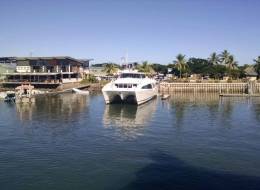
The virus impact on tourism businesses has commenced particularly where second wave effects are blocking domestic transfers internal to a country.
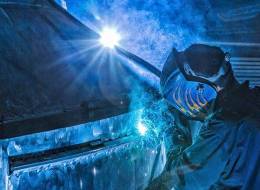
The issue There is a demand that will not be met in the future to support Australian aluminium manufacturing programs due to the reduction in manufacturing capacity in country. This is a trend occurring in the Australian aluminium manufacturing sector that appears to have to date, gone under the radar for the broader market.
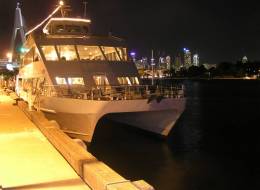
We have brokered the sale of marine businesses and boats worldwide for over 15 years. Director Neil Houlahan shares 5 things that will make the process easier and put more money in pocket when it comes to business sale.
Koh Kood Ferry Timetables
Schedules & information for boats to Koh Kood from Laem Sok and Koh Chang

Boonsiri Ferry – Highspeed Catamaran

Boonsiri Ferry have been running their boat service to Koh Kood for over 8 years. After a bit of searching online you’ll soon learn that this passenger ferry has three names. This arises from the fact that the Boonsiri Ferry company run a catamaran and the vessel’s name is the ‘Koh Kood Fantasea’. Hence Boonsiri Ferry, Boonsiri catamaran and Koh Kood Fantasea.
Boonsiri Ferry began services in 2015 and in October 2018 added a second, lager vessel to their fleet. The new 288 seat, catamaran ferry has three decks, the top deck being a VIP room, and is equipped with a modern state of the art computerized stabilizer and is fully compliant with International Safety Standards.
There are two services a day during High Season between the mainland pier in Laem Sok and Ao Salat pier in the northeast of Koh Kood. In the Low Season there is one ferry running in each direction.
During the High Season, the boats also stop at Koh Mak and Koh Chang. This allows anyone who wants to island hop between Koh Kood, Koh Mak and Koh Chang to do so in air conditioned comfort, rather than by speedboat. The island hopping service was cancelled in 2020 due to the covid pandemic and didn’t resume during the 2022-23 High Season. However, the good news that it will re-start from 1 October 2023 onwards.
Boonsiri Ferry Timetables and Ticket Prices
High season timetable 2023-2024.
| 600 Baht | 10:45 | 11:45 |
| 600 Baht | 14:40 | 15:40 |
| 600 Baht | 09:00 | 09:50 |
| 600 Baht | 12:00 | 12:50 |
If you are heading to Koh Mak you can take the 10:45 boat from Laem Sok. This will first go to Koh Kood and then stops on Koh Mak on the return journey.
Low Season Timetable 2023
| 600 Baht | 13:30 | 14:30 |
| 600 Baht | 09:00 | 10:15 |

Koh Chang to Koh Mak & Koh Kood & Cambodia Ferry Service.
This service was cancelled in 2020 due to the coronoavirus pandemic but will resume operations on 1 October 2023.
As of 1 October 2018, a second catamaran was introduced. This new boat took over the Laem Sok to Koh Kood route. And the older boat will run from Bangbao pier, Koh Chang to Koh Mak and Koh Kood. This is a great alternative for people who prefer a more comfortable ride than the current speedboat services provide.
| Koh Mak – 500 Baht | 09:00 | 10:00 |
| Koh Kood – 750 Baht | 09:00 | 10:30 |
| Hat Lek * | 09:00 | 11:30 |
| Pattaya * | 09:00 | 19:00 |
| Bangkok * | 09:00 | 19:30 |
| Koh Kong (Cambodia) ** | 09:00 | 13:00 |
| Darasakorn (Cambodia) ** | 09:00 | 16:00 |
| Koh Rong (Cambodia) *** | 09:00 | 17:00 |
* Boat & bus. There are no direct boat services to Hat Lek, Pattaya or Bangkok.
** Change buses at the Hat Lek border.
*** Includes the boat to Koh Rong. The Sakorsiri high speed catamaran operated by Boonsiri Ferry.
| Koh Mak – 500 Baht | 14:00 | 14:30 |
| Koh Chang – 500 Baht | 14:00 | 15:00 |
Please note that during Low Season the inter island boats between Koh Chang – Koh Mak – Koh Kood don’t run.
However visitors wanting to go from Koh Chang to Koh Kood can book a ticket that will get them from their hotel on Koh Chang to their hotel on Koh Kood. This involves being taken to the mainland by minibus and Centrepoint ferry, then by road to Laem Sok and then Boonsiri Ferry to Koh Kood. It takes several hours but will get you from one island to the other.
Bus and Boat service from Trat Airport to Koh Mak and Koh Kood
Starting on 1 November 2018, passengers flying into Trat Airport on flight PG301 or PG305 will be able to book a combined bus and boat ticket for Boonsiri Ferry. The ticket price will be 700 Baht to Koh Mak and 800 Baht to Koh Kood.
Likewise for the return trip, passengers departing Trat on PG306, PG308 or PG310 will be able to buy a ticket for the catamaran plus taxi service from Koh Kood to the airport. The ticket price is the same – 800 Baht per person.
How to Book Tickets for Boonsiri Ferry to Koh Kood?
Search and book tickets online using the form below or at https://boonsiriferry.com
Adult ticket price:
The one way ticket price is 600 Baht per person. This includes transport between the ferry pier on Koh Kood and your hotel.
Children’s tickets :
– Children under 5 years old travel free of charge. Children 5 years and over pay the Adult fare.
Pets are allowed :
– Small dogs and cats are allowed – For pets under 15Kg there is fee of 300 Baht . Over 15kg are not permitted on-board
– Up to 30Kg of luggage per person is free of charge. – Luggage in excess of 30Kg, is charged at 20 Baht per Kilo, up to a maximum of 50Kg total.
The service runs year round, although towards the end of Low Season, usually in late September, the boat will be out of the water for a couple of weeks for its annual maintenance.
About the Boonsiri catamarans
Originally called the Boonsiri ‘Fantasea’, the first vessel entered service in November 2013 and quickly proved to be the fastest and most comfortable way to get to Koh Kood . This is due to to it’s is state of the art computerized stabilizer aluminium, catamaran hull, it’s relatively light yet very stable in choppy seas. In good weather, the catamaran can cruise at 25 Knots and the journey takes around an hour and 15 minutes. Which is pretty quick for a vessel that can accommodate 200 passengers plus luggage.
The ship has two decks, the lower deck can seat 150 passengers, whilst the upper deck, which also has some outdoor seating, provide seating for 50 more. The interior spaces are nice and cool with tinted windows and reclining seats. Passengers will also find a small shop selling snacks and drinks plus big screen TVs and free wi-fi onboard.
In 2018 the original boat was replaced with a new, larger boat of a similar style. This can carry more passengers and is faster and more efficient. The old boat is now used on the Koh Chang to Koh Mak to Koh Kood route which runs during the high season.
From Trat to Laem Sok pier
For passengers staying in Trat, a shuttle service by ‘songtaew’ (local pick up truck taxi) is provided. This costs 38 Baht per person and is not included in the price of the boat ticket. You pay the driver. If you buy boat tickets from your hotel, they’ll advise you of the time. Or if you’re booking online, make sure you let the agent or boat company know the name of your hotel and they’ll confirm the details.
If you are flying into Trat Airport on flight PG301, then you’ll be able to take the morning service to Koh Kood at 10:45. And if you are on PG305, arriving at 12:40, then you’ll be able to get to the pier in time for the 14:20 boat – which is the last boat of the day to Koh Kood. However, there aren’t any shared minibuses from Trat Airport to the pier. You’ll need to arrange a private transfer in advance. See: TratAirportGuide.com for more details. Prices are from 1,500 Baht for the 45 minute drive
Transport from Bangkok to Laem Sok pier
Many people opt to take a public bus from Bangkok to Trat, stay the night and see a little of Trat town, and then head to Koh kood the next morning. But if you want to do the trip the same day then it’s a bit of a hassle by public transport.
There are a couple of solutions.
Firstly, it is easy to arrange a private transfer by car or minivan from Suvarnabhumi Airport or a hotel in Bangkok to the mainland pier. This can be done on through well known sites such as iamkohchang.com . Note that if you are staying in a hotel in Bangkok, you’ll need to leave before 08:00 to be sure of catching the last boat of the day at 14:20.
Alternatively, if you want to keep costs down, Boonsiri run their own bus service between Khao San Rd, Bangkok and Laem Sok pier. As this is run specifically for their passengers, you’re guaranteed not to miss the boat. The Boonsiri bus is either a double decker bus or a minibus, depending on the season and the demand.
The price for a combined bus and boat ticket is a very reasonable 1,100 Baht per person. (Or 900 Baht if travelling to Koh Chang) This can be booked through the Boonsiri Ferry website. In Bangkok, the bus picks passengers up from outside the The Street Hostel, Tani Rd ( which is 5 minutes walk from Khao San Rd )
The service also runs in reverse, from Laem Sok to Bangkok, and for passengers heading to Suvarnabhumi Airport, the bus will drop off at Latkrabang airport link train station. Passengers can then take the city line train for the 10 minute journey to the airport.
Finally, for anyone bringing their own car, there’s secure, covered parking available at the Boonsiri office in Laem Sok. This is 50 Baht per night. .

44 thoughts on “ Boonsiri Ferry – Highspeed Catamaran ”
sawasdee Bangkok airways arrives at 1340 at Trat airport. is there enough time to get the boat from Laem Sok to Koh Kood? departure time boat at 1440. thank you for your answer.
The best option is to book a combined minibus and boat ticket with Boonsiri. So you’re guaranteed not to miss the boat.
Book direct at https://boonsiriferry.com/en
Hi, can you please let me know if there is wifi available on the Boonsiri bus/van between BKK and Koh Kood? Thanks
No. If you need Internet during the journey you can buy a Thai SIM card cheaply when you land in Bangkok or any 7-eleven minimart.
Dear Sirs, we are group of 12 people and we need to travel from Koh Chang (Kai Bae beach resort) to Koh Mak (Mira Montra). Date is 04 January 2024.
Do you offer such service? If yes, what price, what time and how to reserve?
You can buy tickets for the Boonsiri Ferry from Koh Chang to Koh Mak online at 12go.com . They are 600 Baht / person . Or you can buy speedboat tickets, 800 Baht / person when you are on the island.
Or if you want a private speedboat to Koh Mak, contact Kai Bae Hut Resort as they have a speedboat company. The owner is: https://www.facebook.com/sroytip.knonkun
I am planning my holiday for January/February next year. I am struggling to find the correct departure and arrival times of the ferry from Koh Kood to the mainland. At all costs, I need to catch the first flight from Trat to Bangkok at 13:10. Can you help me with the planning.
The ferry timetables won’t have been officially announced yet. But they have been the same for the past few years.
So you’ll be able to take the Boonsiri Ferry or Koh Kood Express or Koh Kood Princess and will be able to get to the airport in time for PG306.
Don’t worry about it.
thanks for the response and reassurance. But can you tell me what the first departure time of the ferry is of these companies you mentioned.
The timetables are on this site.
Hello. Can you please give me details of how long the ferry ride is and how long the bus ride is when travelling from Koh kood to Bangkok.
It is an hour by boat from Koh Kood to Laem Sok pier. And from Laem Sok pier to the centre of Bangkok is around six and a half hours, depending on traffic.
Car allowed to ko kood
There aren’t any vehicle ferries to Koh kood – so it isn’t easy to take a car to the island. If you are planning to live on Koh Kood then you could hire a barge or transport boat to take it.
Hello, Yesterday I sent you a form about tickets to Koh Kood on Boonsiri Ferries (and the day before sent a more general enquiry) but I got no reply. I’m therefore not sure that you ever received the forms? We are two adults and a child of 6, arriving 19/2 on PG 305 and leaving 24/2 by PG 306. We would like to buy return taxi + catamaran tickets. Is this possible? Thank you!
I didn’t receive that. So I have just emailed you.
Leave a Reply Cancel reply
Your email address will not be published. Required fields are marked *

High speed catamaran ferry

.png)
- DREDGE/CIVILS
- AUSMARINE (OCEANIA)
- MIDDLE EAST/NORTH AFRICA
- LATIN AMERICA
Passenger Vessel News Roundup | January 3 – Russian ferries and tour boats plus Chinese-built large Ro-Paxes for Western European owners

A French operator welcomes a new ferry to its fleet as two new electric commuter vessels commence operational trials in the Russian capital. A Chinese yard launches the second vehicle ferry in a series ordered by a Finnish shipowner. Finally, a Russian tour operator will expand its fleet with the acquisition of four catamaran newbuildings within the next two years.
Brittany Ferries welcomes third LNG-fuelled Ro-Pax in series

Brittany Ferries recently took delivery of the third LNG-fuelled Ro-Pax vessel in a series built for the company by China Merchants Jinling Shipyard Weihai.
As with earlier sisters Galicia and Salamanca , Santona was ordered by Sweden's Stena RoRo on behalf of Brittany Ferries. The newbuild has a length of 215 metres, a displacement of approximately 42,200 tonnes, and 3,000 lane metres of space for cars and lorries.
Santona will begin serving Brittany Ferries' UK-Spain routes alongside Salamanca later this year.
Electric ferries undergo trials on Russia's Moskva River

Two new electric commuter ferries have begun undergoing operational trials on the Moskva River in the Russian capital Moscow.
Sinichka and Filka have already sailed a total of 7,000 kilometres on the river as part of the trials, the Moscow Department of Transport and Road Infrastructure Development (Moscow Deptrans) confirmed via social media.
The trials also include navigation under winter conditions with broken surface ice.
Russian owner orders four catamaran tour boats

Russian shipowner State Transport Leasing Company, operator Neva Travel, and Sredne-Nevsky Shipbuilding Plant have entered into an agreement on the construction and delivery of four catamaran sightseeing vessels.
The vessels will each have capacity for 150 passengers across two decks and a speed of 11 knots. All interior spaces will also include areas for travellers with limited mobility.
The first two catamarans will enter service in 2024 while the remaining pair will follow in 2025.
Finnlines' newest ferry floated out in China

Finnlines' newest Ro-Pax ferry was floated out at the facilities of China Merchants Jinling Shipyard Weihai on Friday, December 30.
Finncanopus is the second ferry in a series ordered by Finnlines from the same builder. Once completed, it will measure 235 metres long and will have space for 1,100 passengers and up to 5,100 lane metres of freight.
Finncanopus will join sister vessel Finnsirius in operating between Finland and Sweden beginning later this year.
Related Stories

fast outboard catamaran

yacht no destination owner

NO DESTINATION Motor yacht for sale
| Asking price | EUR 13,500,000 |
| Built | 2009 (refitted 2022), Damen, The Netherlands |
| Length | 37.5m (123ft) |
| Guests | 7 guests in 3 cabins |
NO DESTINATION is the perfect yacht for an adventure seeker, blending the capability of a support vessel with the luxury guest spaces of a superyacht. Originally delivered in 2009 by the Dutch shipyard Damen as a Royal Navy crew support vessel, NO DESTINATION is a 37.5m (123ft) explorer yacht conversion built to Bureau Veritas (BV) unlimited navigation classification.

Delivered in 2022 after an extensive 30-month rebuild at Multiship Holland BV, the 196GT NO DESTINATION was extended by 4.5m (14.8ft), fitted with a 5.5-tonne custom A-frame crane, refitted with custom interiors designed by SuperNova Luxury Interiors and Just Design Studio BV and made charter compliant. Her original exterior lines were reimagined by Azure Yacht Design & Naval Architecture.
NO DESTINATION delivers incredible views from her foredeck sun lounge with jacuzzi and on the bridge deck aft there is a lounge that doubles as an open-air dining area. On the main deck aft there is a second al fresco dining option with BBQ shaded by the overhang, overlooking the tender and toy storage. When the tenders are in the water, this versatile space can be used in a variety of ways depending on the owner’s desires.
Inside the bridge deck is an intimate lounge with guest seating and direct access to the helm station. The main deck has a welcoming full-beam lounge area complete with an L-shaped sofa, TV and pantry, which serves as a relaxed gathering space for post-exploration lounging.
NO DESTINATION welcomes up to seven guests in three cabins. There is a full-beam owner’s suite forward on the main deck with a desk to port, walk-in wardrobe and en suite with skylight, steam shower room and bathtub. Aft of the owner’s suite there are two guest cabins, one double cabin and one bunk cabin with three berths, both with en suite facilities.
Twin 1,400hp Caterpillar C32 diesel engines give her a top speed of 22 knots and a range of 3,500nm at her passage speed of 10 knots. Humphree fins and interceptors ensure guest comfort underway and at anchor and the sale includes a custom 9m (29.5ft) Munson Packcat landing craft tender, 5.5m Zodiac RIB, Hobie cat, electric bicycles, scuba diving equipment, two SeaDoos and more.
View all yachts for sale
Key features
- 30-month rebuild completed in 2022 at a premier Dutch shipyard
- Impressive 3,500nm range
- 5.5-metric ton A-frame crane allows for oversized tenders
- 4.5m hull extension
- Oversized bridge deck jacuzzi
- Full-beam master cabin with walk-in wardrobe with en suite
- Dutch pedigree and highly technical engineering throughout
- Custom 9m Munson Packcat landing craft tender
- Large array of water toys including a Hobie Cat, electric bicycles, scuba gear, & more
- Sub-200GT yacht
| Asking price | EUR 13,500,000 |
| Length | 37.5m (123ft) |
| Built | 2009 (refitted 2022), Damen, The Netherlands |
| Beam | 6.4m (21ft) |
| Draft | 3.3m (10.8ft) |
| Gross tonnage | 196 |
| Cruising speed | 10 knots |
| Maximum speed | 22 knots |
| Range | 3,500 nm |
| Flag | Marshall Islands |
| Lying | East Mediterranean |
| Class | Bureau Veritas (BV) + Hull.Mach HSC - Cat A Passenger Ship |
| Exterior designer | Damen/Azure Yacht Design |
| Interior designer | Just Design and Super Nova Luxury Interior |
| Construction | Hull - Aluminium Superstructure - Aluminium |
| Crew | 4 |
| Guests | 7 |
| Cabins | 3 (2 × double, 1 × twin, 1 × additional berths) |
| Engines | 2 × 1,400hp Caterpillar |
| Propulsion | Twin screw diesel yacht |
Featured yachts
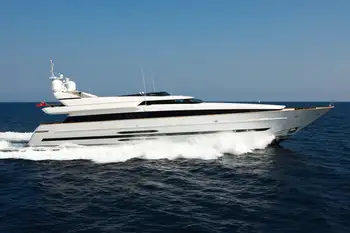
EUR 7,250,000
- Length: 41m (134.5ft)
- 11 guests in 5 cabins
- Built: 2009, Cantieri di Pisa, Italy
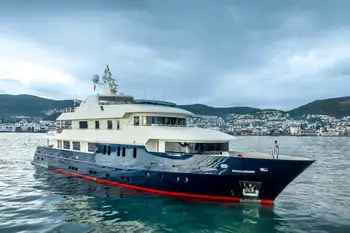
SERENITY II
EUR 7,450,000
- Length: 40.1m (131.5ft)
- 13 guests in 6 cabins
- Built: 2010 (refitted 2021), Mengi-Yay, Turkey
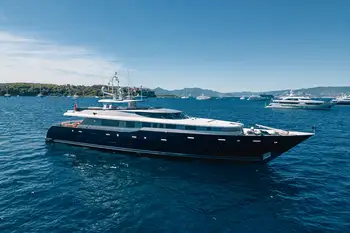
EUR 8,750,000†
- Length: 40m (131.2ft)
- 9 guests in 4 cabins
- Built: 2006, Alloy Yachts, New Zealand
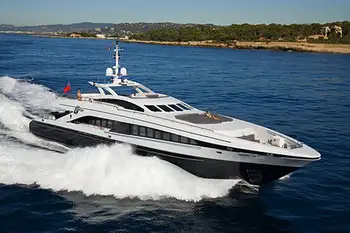
EUR 6,950,000
- Length: 38m (124.6ft)
- 12 guests in 5 cabins
- Built: 2006, Heesen, The Netherlands
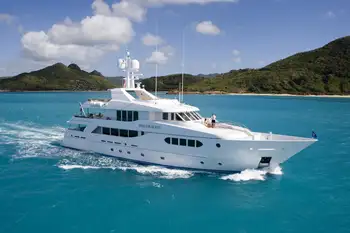
PERLE BLEUE
EUR 9,750,000
- Length: 38m (124.7ft)
- Built: 2007 (refitted 2013), Royal Hakvoort Shipyard, The Netherlands
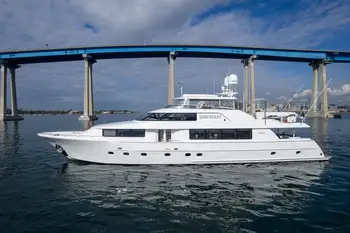
USD 5,900,000 (US duty paid)
- Length: 34.1m (112ft)
- 8 guests in 4 cabins
- Built: 2007, Westport Shipyard, United States Of America

USD 7,880,000
- Length: 33.5m (110ft)
- 10 guests in 5 cabins
- Built: 2014, Horizon Yachts, Taiwan

LEVANTINE II
EUR 4,900,000
- Length: 33.2m (109ft)
- Built: 2013, Pershing, Italy

EUR 2,800,000 (EU VAT paid)
- Length: 32.1m (105.3ft)
- Built: 2006 (refitted 2018), Fipa Italiana Yachts, Italy
Get in touch to discuss your requirements
In order to understand how we use and protect your personal information, please read our privacy policy.
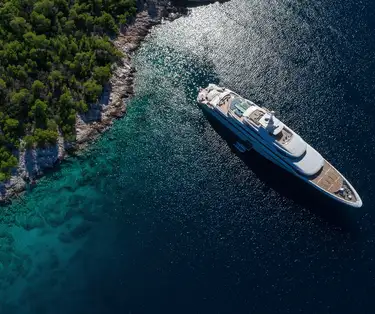
Get in touch and discover the Burgess Difference today.
With offices across the globe, you'll always find a Burgess broker available to help with your enquiry. Contact us now for expert advice on your next superyacht experience.

AMADEUS for sale

SURAMA is for sale

Sold: Overmarine's 39.7m CRAZY

Custom Line NAVETTA 33 is for sale
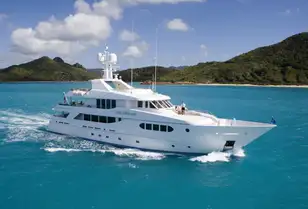
Price reduction on 38m PERLE BLEUE

As-new SODAN is now for sale

QUEEN B SPORT is for sale
%2010004062/cdm_flexplorer_165_10003895_vb5197253_3840x2560.jpg?width=308&height=209&rmode=crop&format=webp&quality=60&v=202407300952)
Semi-custom new-build yacht sold - FLEXPLORER 165
Sign up to our newsletter, stay in the loop.
Subscribe to our newsletter to keep updated with all things Burgess.
What would you like emails about?
- Chartering a yacht
- Buying or selling a yacht
- General superyacht news
In order to understand how we use and protect your personal information, please read our privacy policy .
- Mediterranean
- French Riviera
- Corsica & Sardinia
- The Balearics
- Croatia & Montenegro
- The Bahamas
- Caribbean - Leeward Islands
- Caribbean - Windward Islands
- British Virgin Islands
- US Virgin Islands
New England
- Indian Ocean
- The Red Sea
- South East Asia
- New Zealand
- French Polynesia
- Motor yachts for charter
- Sailing yachts for charter
- Latest offers
- Destinations
- New to charter
- Meet the Charter team
- Superyacht videos
- 360° yacht tours
- Corporate & event charters
- Inspiring charter ideas
- Charter FAQs
- Every day different

Charter in the Med
Last availability for the summer 19 August - 6 September and from 25 September onwards

NORFOLK STAR
Charter in the West Med or Spain
Remaining availability until 29 August
- Motor yachts for sale
- Sailing yachts for sale
- Yachts for sale over 200 feet
- Yachts for sale from 150 to 200 feet
- Yachts for sale under 150 feet
- Tenders and chase boats for sale
- Yachts under construction
- Meet the Brokerage team
- Berths for sale
- Sold yachts
- Yacht marketing
- New Build Sales
- Refit a yacht
- Delivered yachts
- Yacht designers
- Meet the Technical Services team
- Meet the Yacht Management team
- Crew vacancies
- Meet the Crew Services team
- Procurement Services
Charter Management
- Sales Management
Yacht Marketing
- Meet the Insurance team
- 360 degree yacht tours
- Boat shows and events
- Office vacancies
- Talent pool
- Office locations
- Burgess in Asia
- Burgess Blue Oceans
- Strategic partners
- Press centre
- Company Operations
- Crew Services
- New Business
- Technical Services
- Yacht Management
- Burgess Impact Report 2023
Filter your results
- Yachts for charter
Yachts for sale

Pacific Shipyards LADY MARGRET sold

Claasen Shipyards EL PINO in price reduced

10% price reduction for my DUTCH LION
Damen yachting no destination for sale.
Damen Yachting 37 meter motor yacht NO DESTINATION is now offered for sale with Charles B. Jones and Crispin Baynes of Burgess . NO DESTINATION blends the capability of a support vessel with the luxury guest spaces of a superyacht, and she has always been excellently maintained.
This Damen Yachting Explorer was built in aluminum in 2009, after an exterior design by Azure Naval Architects and Damen Yachting, and naval architecture by Damen Yachting. She is powered by twin 1400Hp Caterpillar diesel engines, which allow a cruising speed of 10 knots and a top speed of 22 knots. Moreover, NO DESTINATION has a cruising range of 3500 Nautical miles, and she is equipped to combine relaxed cruising and serious sailing under abundant weather conditions.
Her stylish and contemporary interior, after a design by Just Design Studio BV and SuperNova Luxury Interiors, can accommodate up to 7 guests across 3 capacious staterooms, each with convenient facilities. Furthermore, 2 additional cabins can be used as preferred, and NO DESTINATION features up-to-date equipment and luxurious amenities on board that safeguard the ultimate luxury yacht experience.
NO DESTINATION is now offered for sale in exceptional condition, and she is beyond ready to engage in new extensive journeys whilst traveling in optimal comfort, safety, luxury, and style to any preferred destination.
NO DESTINATION is asking €13.500.000, VAT not paid EU.
You may also like

NO DESTINATION DAMEN
- Inspiration
NO DESTINATION has 7 Photos
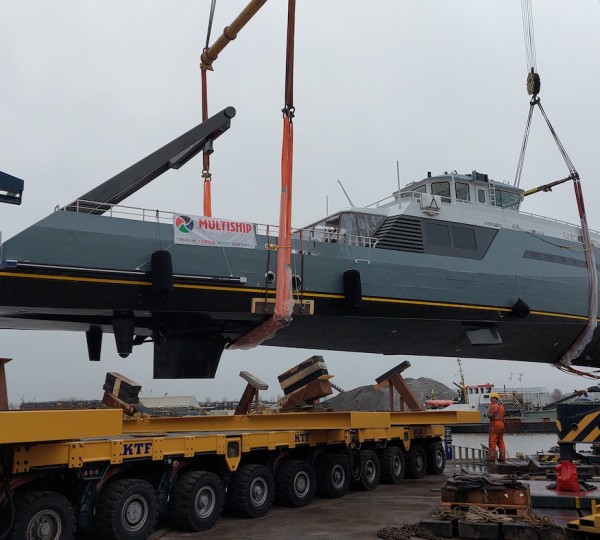
NO DESTINATION News
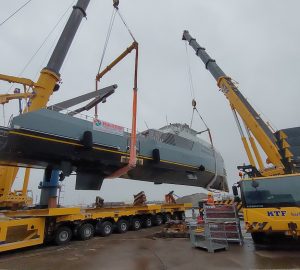
‘Go anywhere, do anything’ luxury ...
Similar yachts.
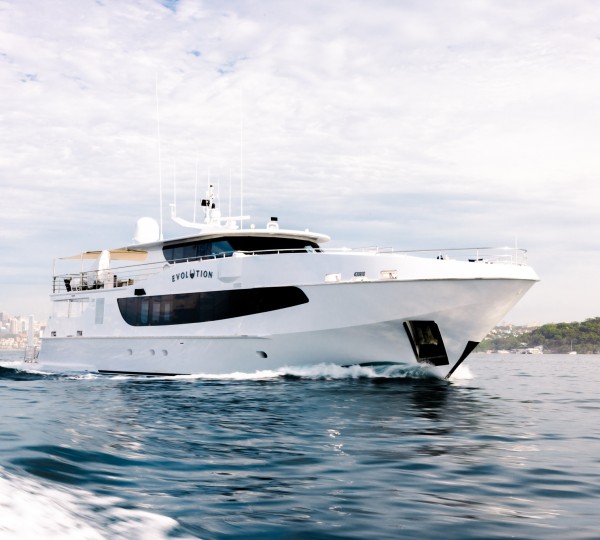
EVOLUTION | From AUS$ 150,000/wk
- Yachts >
- All Yachts >
- All Motor Yachts Over 100ft/30m >
- NO DESTINATION
If you have any questions about the NO DESTINATION information page below please contact us .
Measuring 37.5m (123’0”), the luxury conversion expedition yacht NO DESTINATION (ex SD EVA) features a beam of 7.4m with exterior design by Damen Yachting and Azure Yacht Design & Naval Architecture, with interiors by SuperNova Luxury Interiors and Just Design Studio BV, with naval architecture by Damen Yachting. She was built in 2009 and converted in 2022 offering accommodation for up to 7 guests in 3 cabins and has a crew of 4, sleeping in 2 cabins.
NOTABLE FEATURES OF NO DESTINATION: ~Foredeck Jacuzzi ~Choice of outdoor living areas ~Great selection of water toys ~Custom-built A-frame for water toys and tenders ~Transatlantic range of 3,500 nautical miles ~Draft of just 1.5m/5.1ft for close beach access ~Air conditioning ~Wi-Fi
The exterior styling comes from Damen Yachting and the naval architecture from Azure Yacht Design & Naval Architecture.
The main deck aft is fitted with an A-frame for the easy launch and retrieval of the tender and water toys. The main deck forward is shaded by the bridge deck overhang and creates a sheltered place for meals as a group of seven. Two stairways lead up to the bridge deck for elevated views beneath a canvas shade. The foredeck is used as another guest area and is furnished with sunbeds and a Jacuzzi. INTERIOR
NO DESTINATION Specifications
| Type/Year: | DAMEN/2009 |
|---|---|
| Refit: | 2022 |
| Beam: | 7.4m (24'3") |
| L.O.A.: | 37.5m (123'0") |
| Crew: | 4 |
| Guests: | 7 |
|---|---|
| Max Speed: | 22 knots |
| Cabins: | 3 |
| Engines: | 2x CAT C32 1896hp |
| Cruise Speed: | 10 knots |
| Builder/Designer: | , |
|---|---|
| Locations: |
The interior design is by SuperNova Luxury Interiors and Just Design Studio BV. Details on the interior layout and amenities have yet to be revealed.
A pair of C32 Diesel engines each producing 1,896 HP grant a maximum speed of 22 knots and a cruising speed of 10 knots, at which she has a range of 3,500 nautical miles.
Yacht Accommodation
The accommodation sleeps a total of 7 guests across 3 en-suite cabins. The professional crew of 4 will take care of all the details throughout the cruise.
Amenities and Extras
We do have available further amenity, owner and price information for the 37.5m (123'0") yacht NO DESTINATION, so please enquire for more information.
NO DESTINATION Disclaimer:
The luxury yacht NO DESTINATION displayed on this page is merely informational and she is not necessarily available for yacht charter or for sale, nor is she represented or marketed in anyway by CharterWorld. This web page and the superyacht information contained herein is not contractual. All yacht specifications and informations are displayed in good faith but CharterWorld does not warrant or assume any legal liability or responsibility for the current accuracy, completeness, validity, or usefulness of any superyacht information and/or images displayed. All boat information is subject to change without prior notice and may not be current.
Quick Enquiry
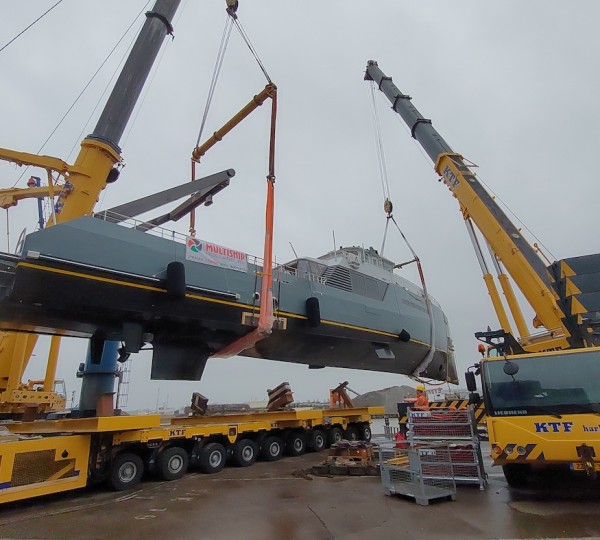
IDYLLE | From EUR€ 65,000/wk
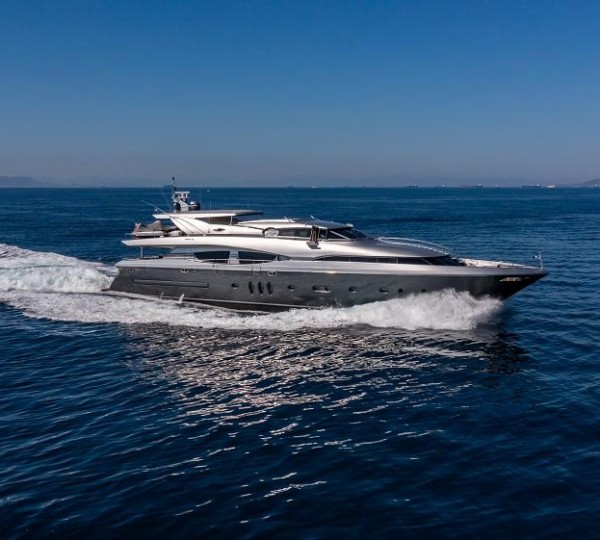
PEFTASTERI | From EUR€ 100,000/wk
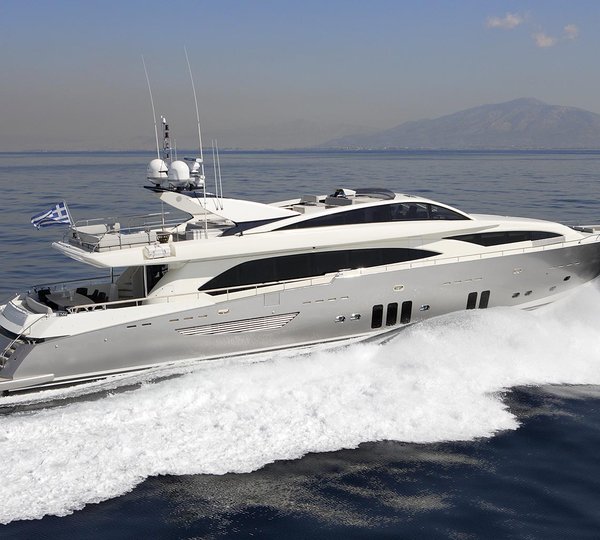
DRAGON | From EUR€ 105,000/wk
- Brokerage News
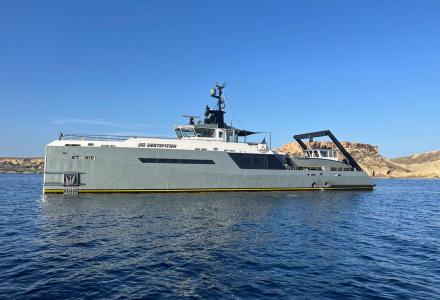
No Destination
- Yacht Harbour
- Yacht No Destination
About No Destination
Contact agent.
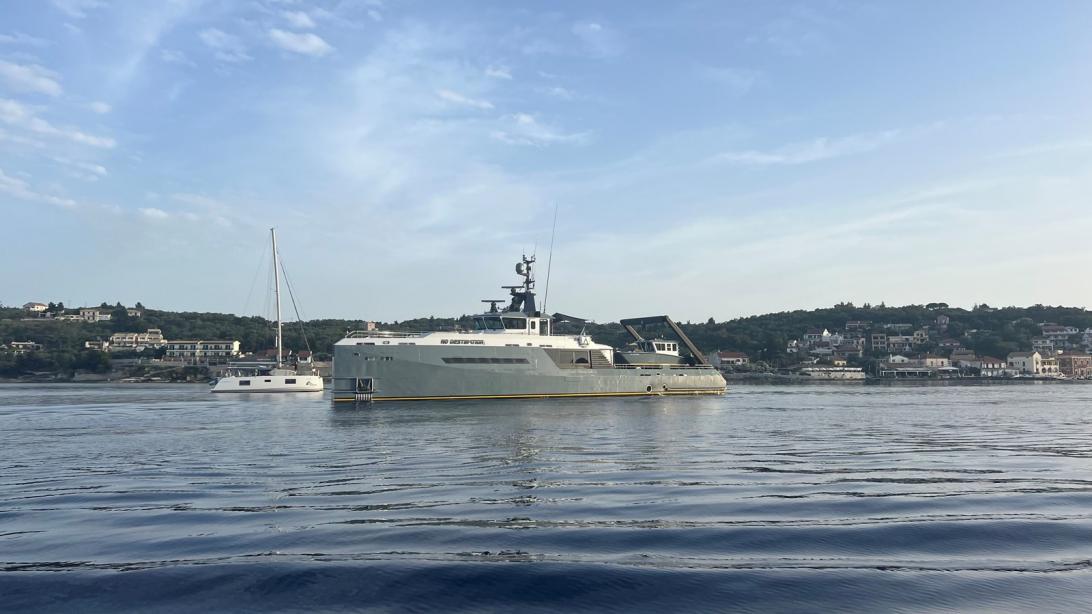
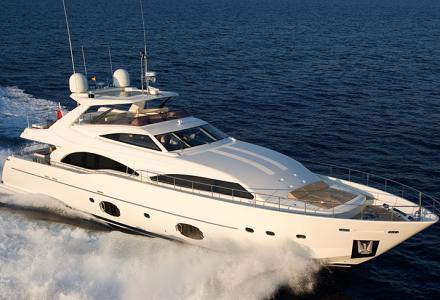
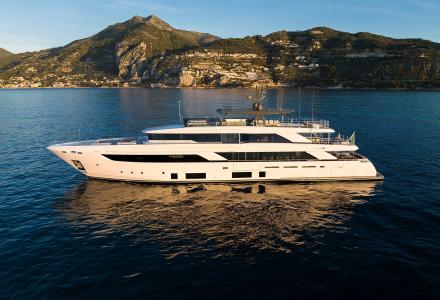


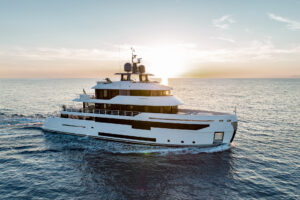

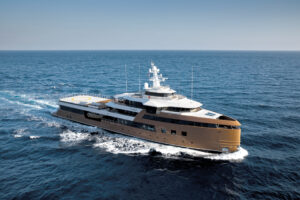
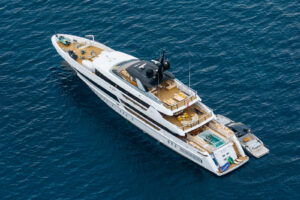
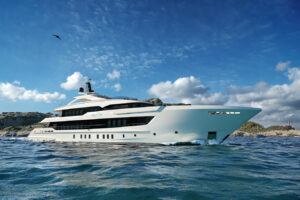


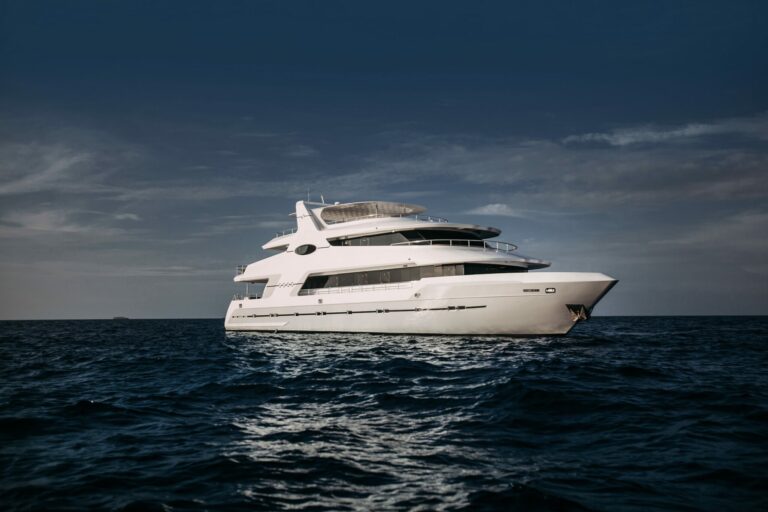

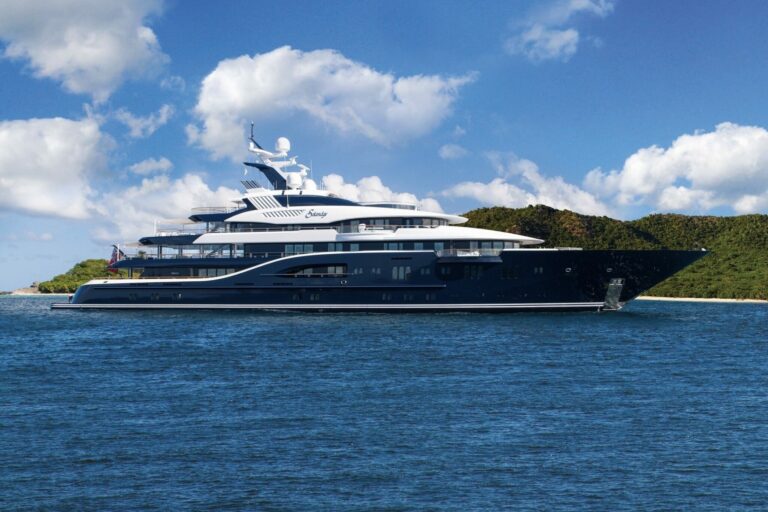
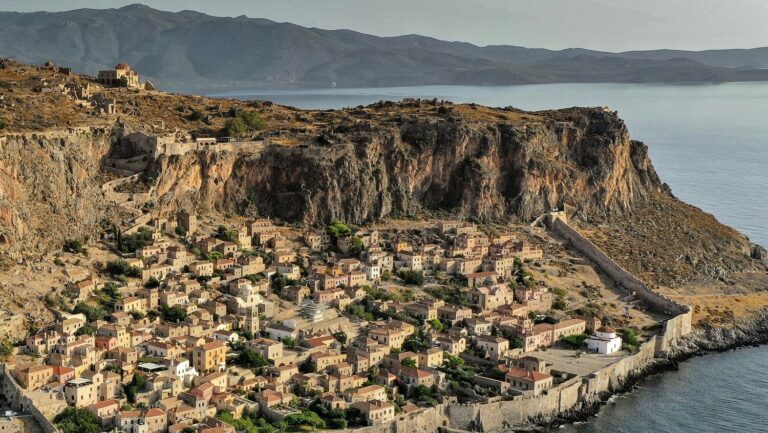
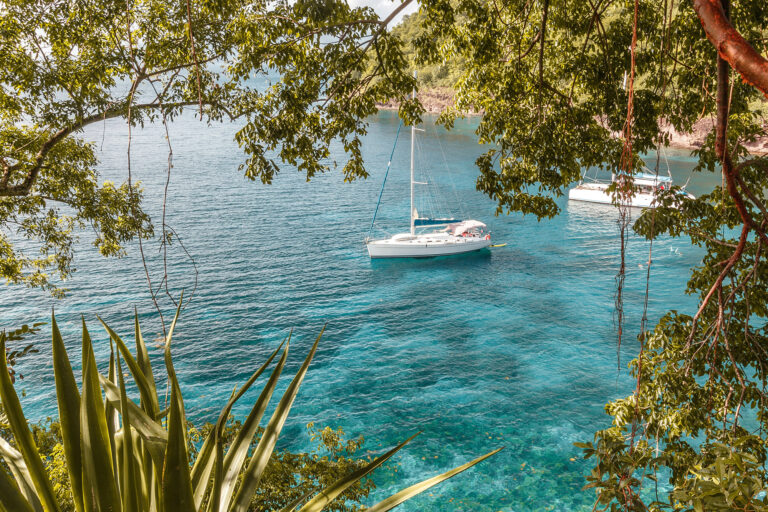


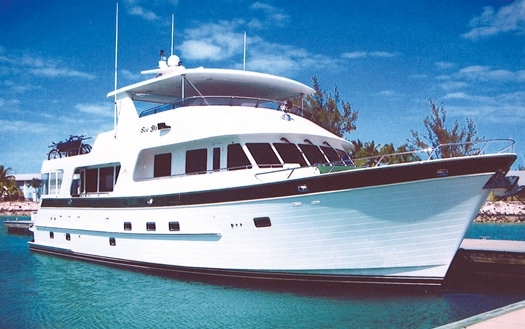
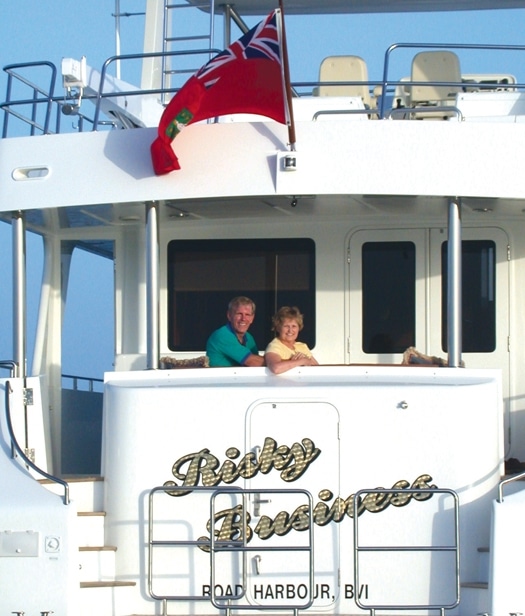
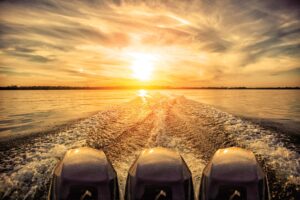
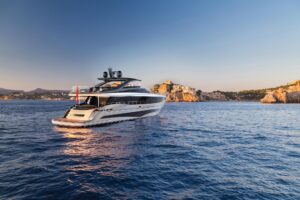
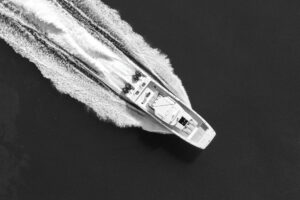
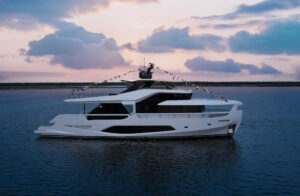

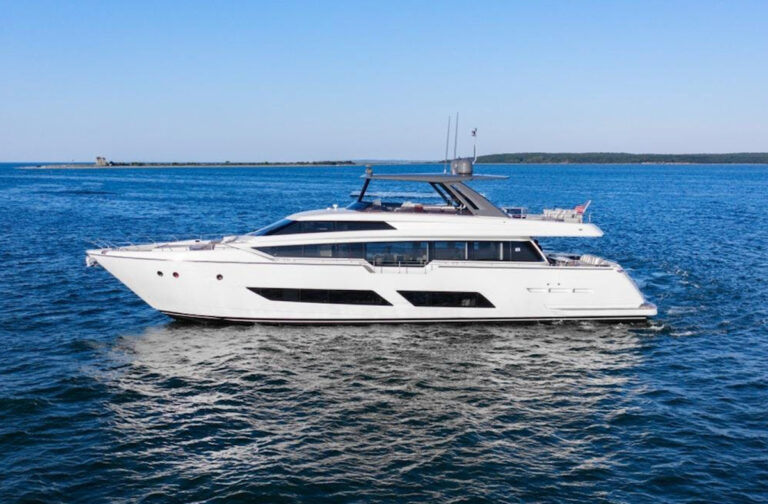
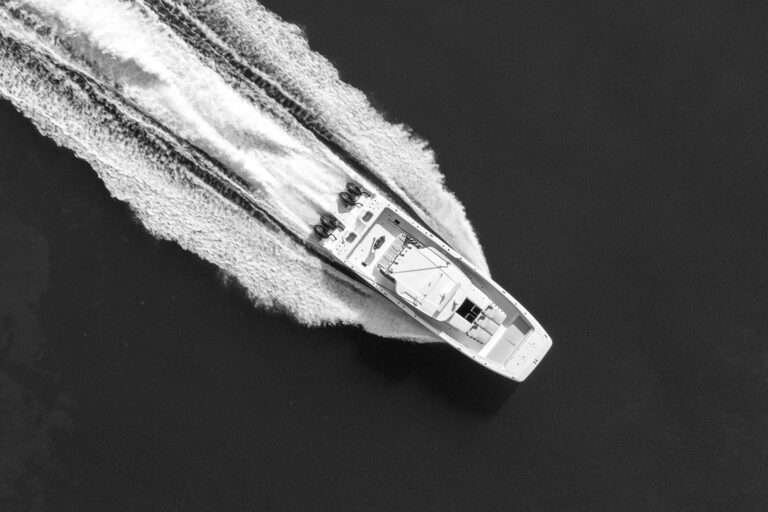


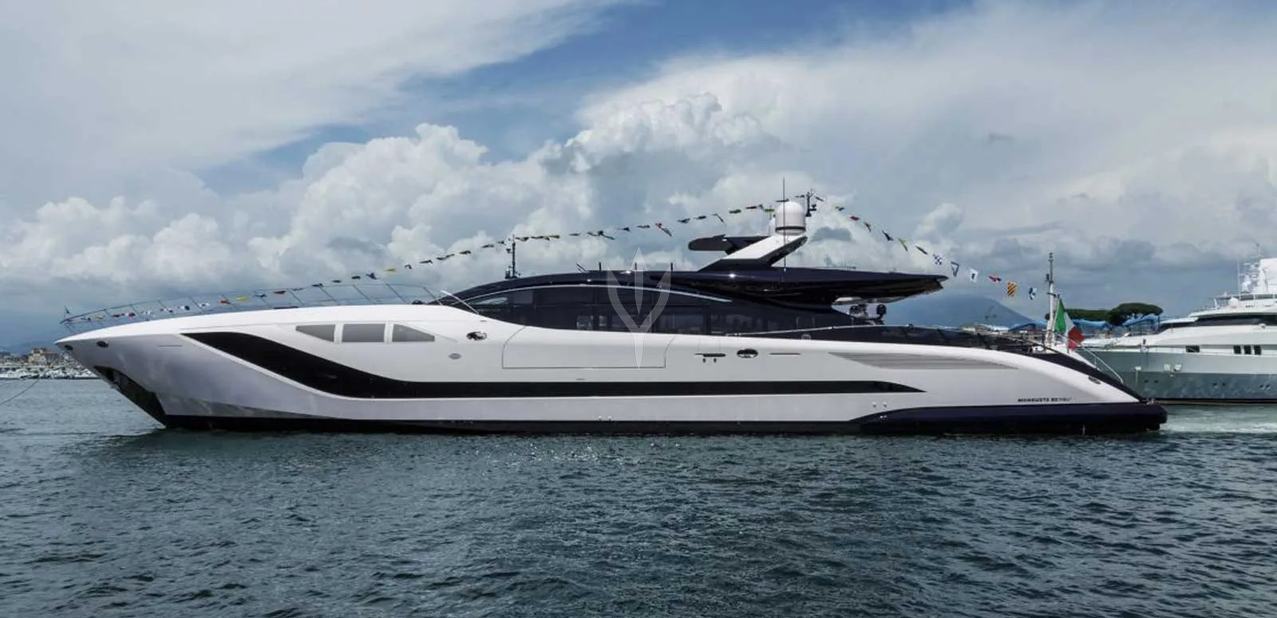
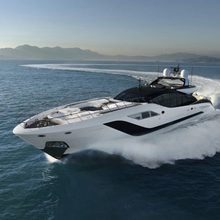
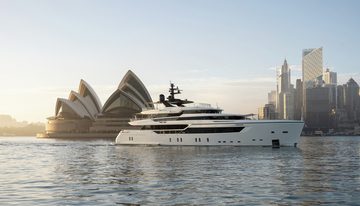
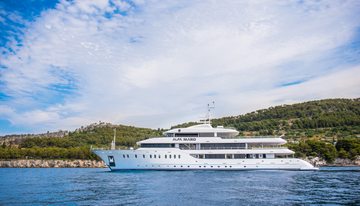
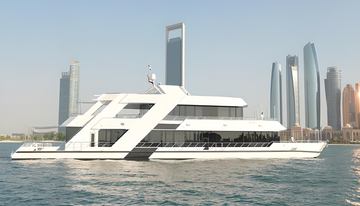
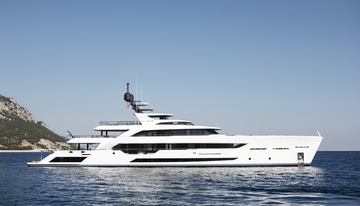
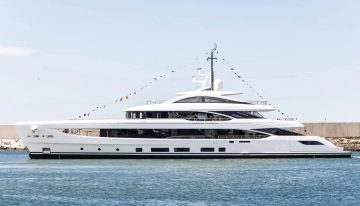

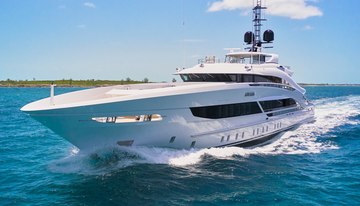
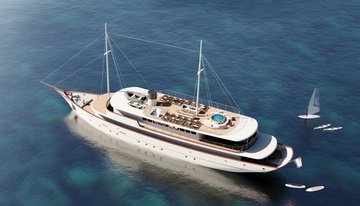
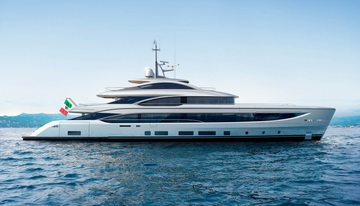
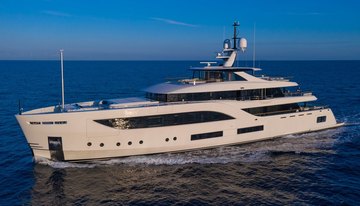
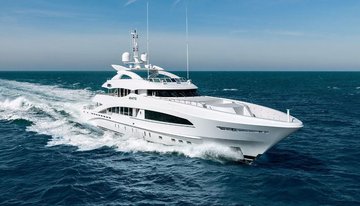
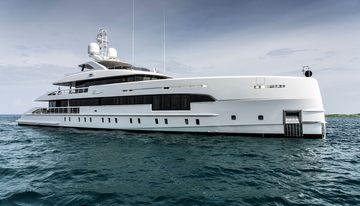





IMAGES
COMMENTS
The Fastest Ferry. The Franciso ferry remains the fastest ferry, built by Incat: HSC Francisco is a High-Speed Catamaran built by Incat in Hobart, Tasmania. Powered by liquefied natural gas, she is currently the fastest passenger ship in service, reaching a speed of 58 knots (107 km/h; 67 mph). The propulsion is by two GE LM2500 water jets.
A high-speed craft (HSC) is a high-speed water vessel for civilian use, also called a fastcraft or fast ferry. The first high-speed craft were often hydrofoils or hovercraft, but in the 1990s catamaran and monohull designs become more popular. Most high-speed craft serve as passenger ferries, but the largest catamarans and monohulls also carry ...
47m High Speed Catamaran Ferry 2009 built - GRT 700: 154' 36' 3' 2009: DNV: POR: 13974: 50m Catamaran Ferry 2023 built - DWT 300: 164' 56' 7' 2023: 300: ABS: POR: 13906: 78m Double Ended Passenger Ferry 2023 - 2000 Passengers: 256' 2023: BV: China: $6,500,000: 13895: 78m Double Ended Catamaran Pax Ferry 2023 built Netherlands: 256' 46' 13'
HSC Francisco is a high-speed catamaran built by Incat in Hobart, Tasmania.Powered by liquefied natural gas, [3] she is currently the fastest passenger ship in service, reaching a speed of 58 knots (107 km/h; 67 mph). Propulsion is by two GE LM2500 gas turbines, coupled with two Wärtsilä water-jets. The catamaran is owned and operated by Argentine-Uruguayan ferry company Buquebus.
A Formula 16 beachable catamaran Powered catamaran passenger ferry at Salem, ... In addition to greater speed, catamarans draw less water than do monohulls— as little as 3 feet (0.91 m) —and are easier to beach. Catamarans are harder to tack and take up more space in a marina. Cruising catamarans entail added expense for having two engines ...
Similar to sailing cruising catamarans, they also have power cruising catamarans. These also have living quarters and are stable while out on the water. The speed of these vessels highly depends on the motors equipped and the size of the boat itself. Like passenger transport or ferries, catamarans have a high speed of about 40 to 70 miles per hour.
The layout and personal lifesaving equipment guarantee a safe escape. The Damen Fast Ferry 4212 is a high-speed aluminium catamaran, designed for coastal operations aiming at high passenger comfort. Road Ferry 13023 is designed for fast boarding and has efficient catering facilities. Integrated shore charging and mooring systems to charge ...
Competing High-Speed Catamaran Electric Ferries. Courtesy Artemis. Published Jan 22, 2021 3:38 PM by Harry Valentine. The combination of advances in boat hull design, hydrofoil design and electric ...
Daniel Wade. August 30, 2022. Catamarans are known for their speed, and some vessels are fast enough to break world sailing speed records. Catamarans can go between 15 and 30 knots, with the fastest achieving speeds well in excess of 60 knots. Sailing catamarans are sometimes twice as fast as monohulls and cut through the water with greater ...
Learn more about our robust fleet of high-speed Seastreak catamarans. Learn more about our robust fleet of high-speed Seastreak catamarans. Skip to main content +1 (800) BOAT‑RIDE; Facebook Twitter YouTube ... High speed passenger ferry: Built By: Gladding-Hearn Shipbuilding, Somerset, Massachusetts: Length: 140.7 feet: Breadth: 34.22 feet ...
Our Fast Ferries are a series of high-speed, aluminium catamarans for passenger transport. They are designed for coastal operations and have high levels of passenger comfort, as well as low fuel consumption and maintenance costs. ... Amenities such as kiosks and entertainment are tailored to the specific use of the ferry. Fast Ferry 4212 / 4010.
This high-speed catamaran operates between Hyannis and Nantucket. Length Overall: 151.4' ... The vessel was reacquired and renamed by Hy-Line in 2005 and embarked on a new adventure: seasonal high-speed ferry service between Hyannis and Martha's Vineyard. In addition to this service, she is also our high-speed connection inter-island ...
Some of the fastest cruising catamarans include the Gunboat 68 (35 knots), Outremer 45 (25 knots), ORC50 (25 knots), FastCat 435 (20 knots), TS 42 (35 knots), and Lagoon 440 (20 knots). Yet, there are many more cats that can reach 35 knots safely. If you are interested in knowing about the fastest cruising catamarans, I have you covered.
The 94 metre high-speed vehicle passenger ferry, an Austal Auto Express 94, is an all new aluminium catamaran that will carry 926 passengers and 250 cars at cruising speed of 37.5 knots (90%MCR), when it commences operation between the islands of Trinidad and Tobago in the Caribbean Sea, in the second half of 2020. The A.P.T. James is the very first vessel to be constructed at
Published Jul 14, 2022 8:45 PM by The Maritime Executive. The world's first fully electric and zero-emission fast ferry, classed as a high-speed craft, recently completed construction and is ...
Experience coastal New England on a scenic trip aboard a high-speed catamaran. Salem Ferry offers round-trip service between Salem and Boston. ... Salem Ferry. Home » Transportation » Salem Ferry. Bookmark Listing . Info. 10 Blaney Street Salem, MA. 1-877-733-9425.
The HSC Hai Xia Hao is a passenger / vehicle ferry. It is a high speed catamaran built by the Tasmanian shipbuilder Incat. History. The Cat was constructed for Bay Ferries as The Cat and operated seasonally in from 2002-2005 in international service from May to October across the Gulf of Maine between Yarmouth, ...
The attached high speed catamaran ferries are typical vessels for sale or charter with all vessels being constructed from aluminium to allow weight reduction to achieve higher performance. Typically speeds from 24 to 50 knots are provided with carrying capacities from 100 to 600 passengers. Unless domestically rated the majority of ferries ...
Starting on 1 November 2018, passengers flying into Trat Airport on flight PG301 or PG305 will be able to book a combined bus and boat ticket for Boonsiri Ferry. The ticket price will be 700 Baht to Koh Mak and 800 Baht to Koh Kood. Likewise for the return trip, passengers departing Trat on PG306, PG308 or PG310 will be able to buy a ticket for ...
View your notifications within Behance. Log In. Sign Up
A Chinese yard launches the second vehicle ferry in a series ordered by a Finnish shipowner. Finally, a Russian tour operator will expand its fleet with the acquisition of four catamaran newbuildings within the next two years. ... The vessels will each have capacity for 150 passengers across two decks and a speed of 11 knots. All interior ...
The team at Victory Powerboats West recently spent some time dialing in its latest Victory catamaran with twin Mercury Racing 450R engines and reached an impressive 141-mph top sp
PDQ Yachts in Whitby, Ontario, Canada, launched the Alan Slater-designed PDQ 32 catamaran in 1994 and built 53 of the boats in the following eight years. Practical Sailor first reviewed the PDQ 32 catamaran in April 1997, which happened to be when the test boat for this review update rolled off the production line. Heres a look at what testers have learned from coastal cruising this boat for .....